





SUPERIOR-SIZE YOUR SUPPLY CHAIN.











SUPERIOR-SIZE YOUR SUPPLY CHAIN.




Only Michigan has a supply chain that includes four Great Lakes with an extensive network of marine highways and 33 deep-water ports. It’s how the world’s top manufacturing, engineering and mobility businesses get the upper hand in global logistics. Seize your opportunity at MICHIGANBUSINESS.ORG

Major Transportation Corridors
Situated along Highways 401 and 402, covering over 1,080 square miles.
Proximity to Key Locations
Adjacent to London International Airport, with six universities and four colleges within 62 miles.
Strong Advanced Manufacturing

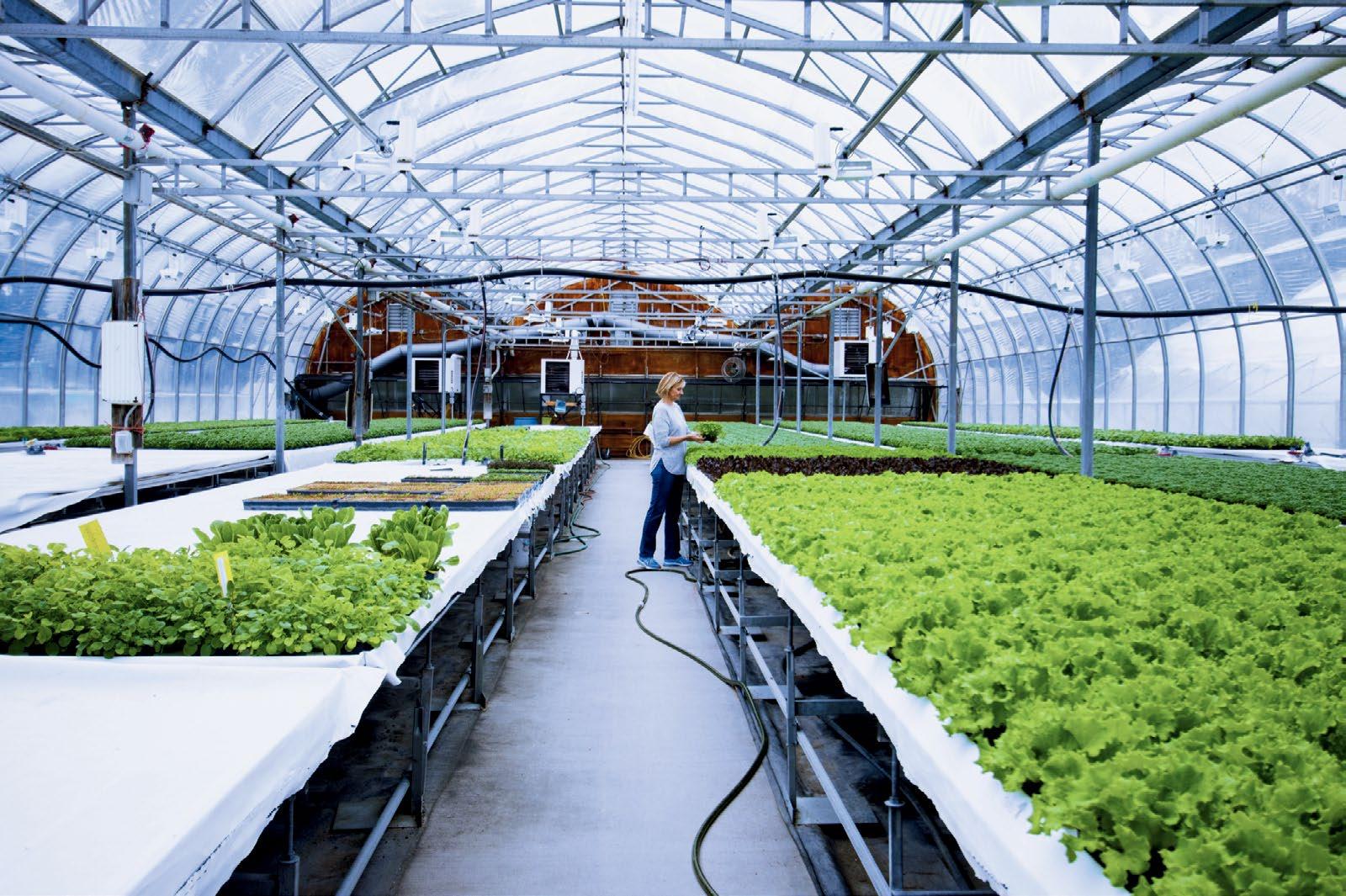
Nestled in the heart of Southwestern Ontario, Middlesex County offers a blend of urban and rural advantages. Surrounding the City of London and located just two hours from Toronto and Detroit, Middlesex County consists of eight municipalities, each presenting unique investment opportunities.


An extensive ecosystem of manufacturers in motor vehicle parts, agri-food processing, and pharmaceuticals, supported by a solid base of trucking and logistics services.
Easy access to Canadian and crossborder markets, making it a popular choice for both commercial and industrial development. Market Access

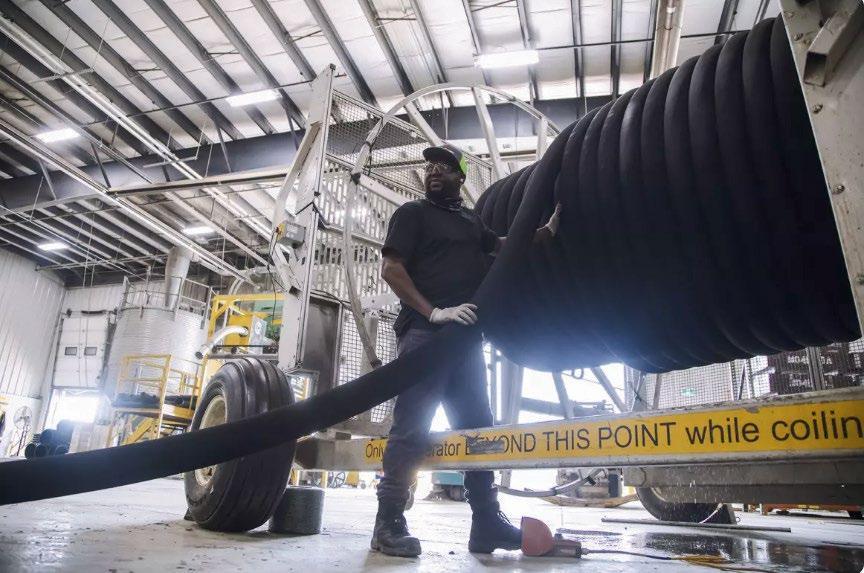
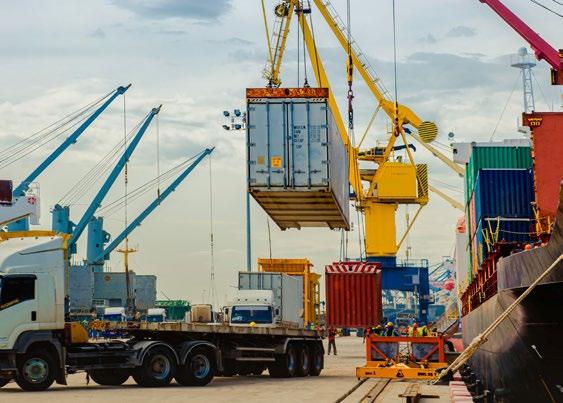


TEXAS: Reigns As The Best State For Business
PENNSYLVANIA: Gets It Done.
TENNESSEE: Great Brands Deserve the Great State of Tennessee
INDUSTRY OUTLOOK: Intermodal Distribution Undergoing Rapid Transformation
More resilient methods coupled with more data are being used to manage the demands of fast-moving e-commerce growth
By David Hodes
INNOVATION AND STRATEGIES: Airport Development Flying High
Sustainability remains a priority in new airport development as airports build new terminals and add more digital systems assistance
By David Hodes
INDUSTRY INSIGHT: Logistics Adapting to Changing Times
Artificial intelligence for responding to demand, and OEMs bringing suppliers closer to manufacturing operations, are two solutions being explored By David
Hodes
MICHIGAN: PURE OPPORTUNITY
RHODE ISLAND: Optimal Location
ASSOCIATE PUBLISHER
Alan Reyes-Guerra areyes@bxjmag.com 205-862-5175
FEATURES EDITOR
David Hodes
CREATIVE DIRECTOR
Clint Cabiness clint@dialedinmediagroup.com 205-613-5910
EDITORIAL OFFICE
King Publishing, Inc. 1000 Stafford Court Birmingham, Alabama 35242 Tel: 205-862-5175
ONLINE MEDIA ASSISTANT Nick Boliek nick@dialedinmediagroup.com
SUBSCRIPTION CHANGES & REQUESTS 205-862-5175 or www.bxjmag.com
King Publishing, Inc., 1000 Stafford Court, Birmingham, AL 35242; www.bxjmag.com. Advertising rates are furnished upon request. Subscriptions are free to those who qualify. Non-qualified subscriptions are $69 in the U.S.; $89 in Canada and Mexico; elsewhere outside the U.S. is $99 for 10 issues. Back issue rate is $6 when available. Payment must accompany order. The views expressed in all articles and advertisements appearing in the Business Xpansion Journal magazine are solely those of the author and advertiser, respectively.
© Copyright 2025, King Publishing, Inc. All rights reserved. No partof this publication may be reproduced without written permission from the publisher.
POSTMASTER: Send change of address notification to Business Xpansion Journal, 1000 Stafford Court, Birmingham, AL 35242. Subscribers can make address changes by calling 205-862-5175 or by e-mail at www.bxjmag.com.

1000 Stafford Court, BIRMINGHAM, AL 35242
TEL: 205-862-5175
in the U.S.A.


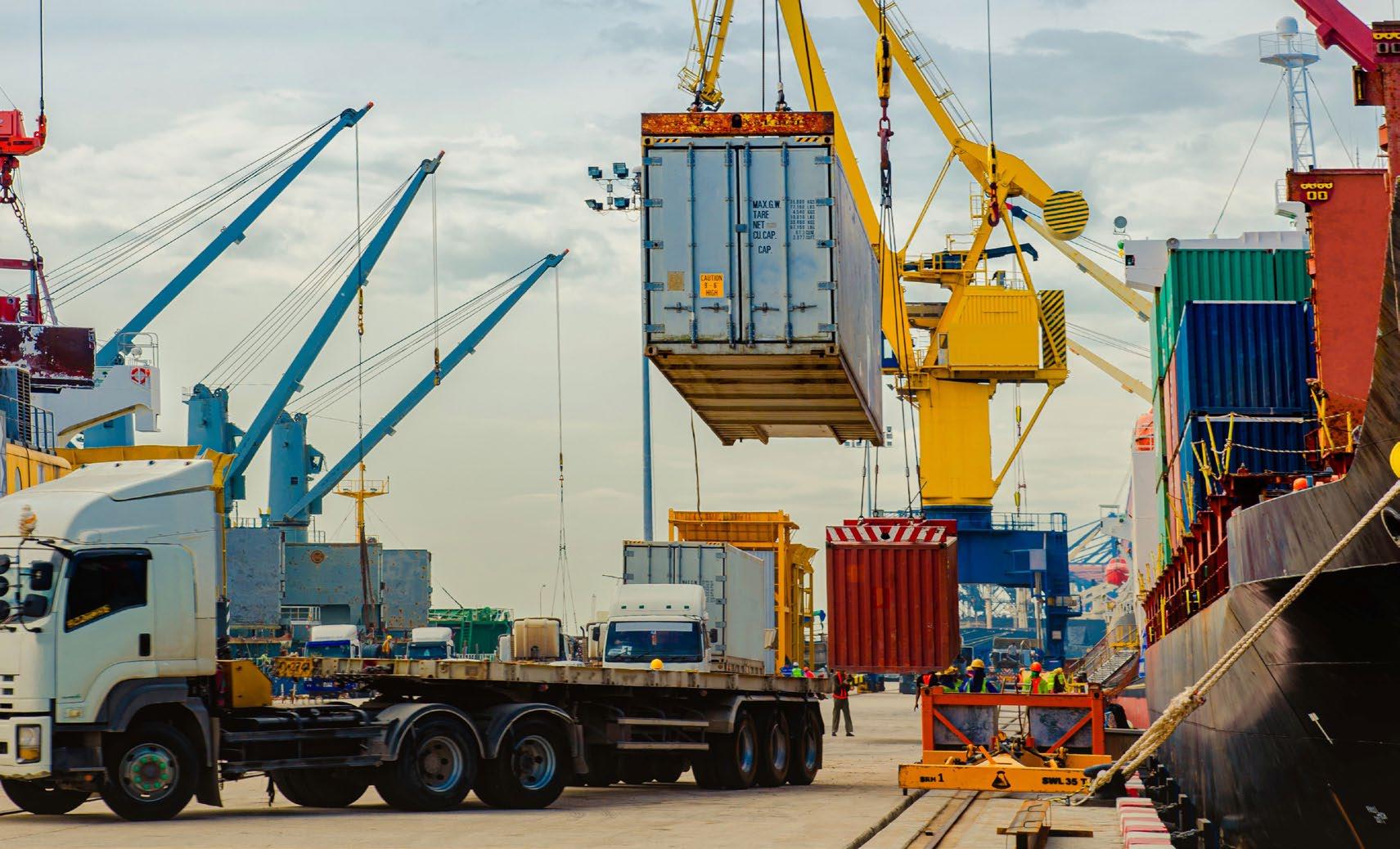
BY: DAVID HODES
More resilient methods coupled with more data are being used to manage the demands of fast-moving e-commerce

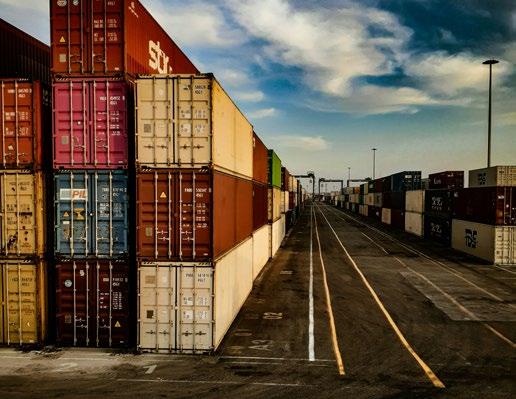
The intermodal distribution model has been undergoing significant transformation over the last five years as more countries step up their efforts.
A 2023 McKinsey and Company report stated that intermodal transportation is on the rise, especially in the Asia Pacific area, where the regional geography makes multiple transport methods more of a necessity than a luxury.
In a region with many nations, including those with a large land area like China, as well as many islands that are only accessible by sea or air, logistics rely on intermodal transportation for both reach and efficiency. “Asia-Pacific e-commerce growth continues to outpace the rest of the world, and it is making intermodal transportation more important than ever,” the report concluded.
A separate McKinsey report showed that nearly all surveyed companies have raised the priority of resilience within their supply chains, and have plans to further increase resilience in the coming years—all a result of the lingering effects of the pandemic. “By reducing reliance on a single mode of transportation or region, companies have more flexibility to respond to potential disruptions. This improves inventory management and customer satisfaction while reducing the risk of out-of-stock products,” the report concluded.
Intermodal development in general has centered around the using more and more data to seamlessly coordinate different modes of transport (rail, road, air, and sea); optimization of intermodal hubs, such as ports, rail terminals and distribution centers;
and tracking and visibility across all transport modes in real time. Intermodal distribution is built on a logistical strategy to optimize the entire supply chain by combining the strengths of different transportation methods.
Collecting and working with up-to-theminute status data—where things are and when they can be delivered—that has become a focus.
In North America, intermodal distribution generates an annual revenue of $59 billion, according to the Intermodal Association of North America. There are 19 million truckloads a year moving 500 miles or more, and 18 million loads moved by rail annually.
Some of the leading intermodal companies in the U.S. include J.B. Hunt, headquartered in Lowell, Arkansas. It’s one of the largest intermodal services in North America, with a company-owned fleet of more than 122,000 containers and 6,500 tractors.
In October, 2024, J.B. Hunt announced a collaboration with a UP Labs, which is a logistics and freight-focused lab aiming to launch as many as six startups over the next three years to solve core strategic challenges within the industry. The startups will begin launching in 2025.
Another major U.S. intermodal company, Hub Group, headquartered in Oak Brook, Illinois, entered a joint venture in November, 2024, with EASO, an intermodal and trucking logistics provider in Mexico. Through a network of terminals across Mexico, EASO serves the Mexican domestic market and main logistics hubs in the U.S. using its intermodal crossborder network.
XPO Logistics, headquartered in Greenwich, Connecticut, with 13,000 driver and 44,000 tractors and trailers, is also focusing on Mexico. The company announced in July, 2024 a major expansion of its Mexico service with the launch of XPO Mexico+.
Jan Klingberg, the senior director of strategy for EnVista, a supply chain and enterprise solutions provider, told BXJ that one of the things they are seeing in terms of their network optimizations is that people are still talking about resiliency and making sure that there are redundancies in places.

“It’s to prevent a pandemic-style event from happening,” he said. “So a lot of people are still very interested in terms of what does it look like for not even just globally, but in terms of the U.S. having multiple locations to cover resiliency for their North American networks.”
The size of the shipments were adjusted because of ecommerce, Klingberg said. “One of the things that was affected by ecommerce growth was when shipping to stores, you were shipping potentially upwards of several cases or pallets to a store, or several cases to a local distribution center,” he said. “When you’re switching over to ecommerce, you’re shipping 1.3 items to an individual. So it really changes that dynamic in terms of all of that’s going to be shipped some form of parcel.”
One of the problems still to be solved with ecommerce are returns, according to Klingberg. “I know Amazon has a very, very big return problem, and I don’t know if they’re really, truly addressing it. It’s especially a problem if you’re in the apparel industry.”
E-commerce is the driving influence for much of the increased intermodal distribution activity, which is making other countries build up their capabilities.
Global ecommerce sales are forecast to grow from $5.13 trillion in 2022 to $8.09 trillion by 2028, according to Shopify. In 2024, total revenue from online transactions will likely surpass $6 trillion.
China and the United States are the largest contributors to global ecommerce, with sales
from these two countries totaling more than $2.32 trillion in 2023. The Asia-Pacific region is expected to witness the fastest growth, fueled by rapid industrialization, urbanization, and the expansion of e-commerce, according to new report published by Market Research Future.
A global retail commerce economic forecast report from Forrester, a business research firm, found that online retail sales for the top five Asia-Pacific region countries—China, South Korea, Japan, India, and Australia—are expected to increase from $2.2 trillion in 2023 to $3.2 trillion in 2028, led by China.
These region countries are working to better develop their intermodal capabilities.
One example is the Australia Inland Rail project divided into 12 sections with expected completion by 2027. The project is a 1,000-mile freight rail line now under construction in Australia, designed to connect Melbourne and Brisbane via regional connections in Victoria, New South Wales, and Queensland. The project involves upgrades or enhancements to approximately 600 miles of existing track and the construction of 370 miles of new track.
Another intermodal-related project is Indonesia’s Jakarta to Bandung 100 mile rail line, the first high speed rail project in south Asia. The train travels at a speed of 215 miles per hour, making the journey between the two destinations just 40 minutes from its previous travel time of over three hours. The rail line was built in 2023 with cooperation from China under the Belt and Road Initiative, launched in 2013. It is a China-led infrastructure project

linking East Asia to Europe, with projections for potential development in Africa and Latin America.
Transportation operators need to have reliable and affordable predictions about modes of transportation arrivals, according to researchers in a review article published by the Centre for Research and Technology Hellas based in Thessaloniki, Greece.
The article keyed in on a proposal called the Classification and Regression Trees (CART) model designed to reduce the range of
uncertainty of ship arrivals in port. The goal was to forecast container ship delays.
The work on CART led to a database with information about so-called mother and feeder vessels arriving at specific container terminal in 2010.
Another issue addressed in the review was the problem of detecting anomalies in vehicles movement. These anomalies point to either wrong direction, traffic or accident(s). The review concluded that the accurate and instant detection of these anomalies, especially in real time, leads to risk reduction for drivers and their vehicles, and immediate route adjustment.
Interestingly, researchers conducted their experimental analysis on anomalies using a dataset describing the movement of New York taxis.
When asked about better analytics and intermodal distribution operations, Christoph Hempsch, head of sustainability for Deutsche Post DHL’s German Post and Parcel, speaking to a McKinsey researcher, said that the first and foremost example is forecasting and demand planning. “With increasing volatility and volumes, it’s more important than ever to
The Port of Long Beach is a global leader in operational excellence and top-notch customer service, moving cargo with reliability, speed and efficiency – making it the premier U.S. gateway for trans-Pacific trade.
Located in Southern California and part of the San Pedro Bay ports complex, the busiest in the nation, the Port of Long Beach handles trade valued at more than $300 billion annually and supports 2.6 million trade-related jobs across the United States, including 575,000 in Southern California and 1 in 5 jobs in Long Beach.
Spanning 3,200 acres with 31 miles of waterfront, 10 piers, 73 post-Panamax cranes and some of the deepest berths in the country, the Port’s facilities can accommodate the largest shipping vessels in the world.
The Port boasts some of the most modern, well-equipped waterfront facilities in the world, including the world’s most technologically advanced container terminal – Long Beach Container Terminal.
In 2024, the Port moved 9.6 million container units – the busiest year in its 113-year history – without disruptions or backlogs.
In 2025, the Port is celebrating 20 Years of Leading Green – 20 years since the landmark Green Port Policy was enacted by the Long Beach Board of Harbor Commissioners in 2005.
Over the past two decades, the Port has implemented sustainability initiatives that resulted in a cleaner harbor, industry-leading green building practices and most notably, dramatic air quality improvements: diesel emissions are down 92%, nitrogen oxides by 71%, sulfur oxides by 98% and greenhouse gases by 17%.
And the Port of Long Beach continues to work towards becoming the world’s first zero-emissions port.
In the next 10 years, the Port is planning $2.3 billion in modernization projects to further prepare for the demands of global trade. The Port’s capital improvement program is designed to enhance
marine terminal productivity, deliver greater efficiency to our customers and improve the sustainability of our operations.
Projects include the $1.8 billion Pier B On-Dock Rail Support Facility, which will shift more cargo from trucks to trains, tripling the volume of on-dock rail capacity handled annually. The advanced rail hub will help speed cargo through the San Pedro Bay ports complex and integrate seamlessly with national railroad operators. Construction began in 2024 and is expected to be complete in 2032.
The Harbor Deepening Project will allow the largest liquid bulk cargo and container ships to more easily access the harbor, speeding goods movement and improving the environment. In partnership with the U.S. Army Corps of Engineers, the project begins construction in 2028.
To strengthen U.S. energy independence and reliability, we are proposing to develop “Pier Wind,” a facility to assemble floating offshore wind turbines, which would be towed to sites off Central and Northern California. The project would create jobs, help the Port and other sites meet rising energy demand and add to the state’s portfolio of renewable energy.
The Port has developed a data solution known as the “Supply Chain Information Highway,” which offers the industry a flexible, safe source of data, giving operators the information they need, when they need it.
And by operating Foreign Trade Zone 50, the Port of Long Beach helps qualifying businesses to decrease their operating costs and increase cash flow by reducing, deferring or eliminating customs duties and excise taxes.
Customers choose the Port of Long Beach for the most dependable, cost-effective and fastest delivery of goods in the world, along with the strong relationships it maintains with industry, community, environmental advocates and partner agencies. In 2024, industry leaders named it “The Best West Coast Seaport in North America” for the sixth consecutive year. For more information, visit polb.com
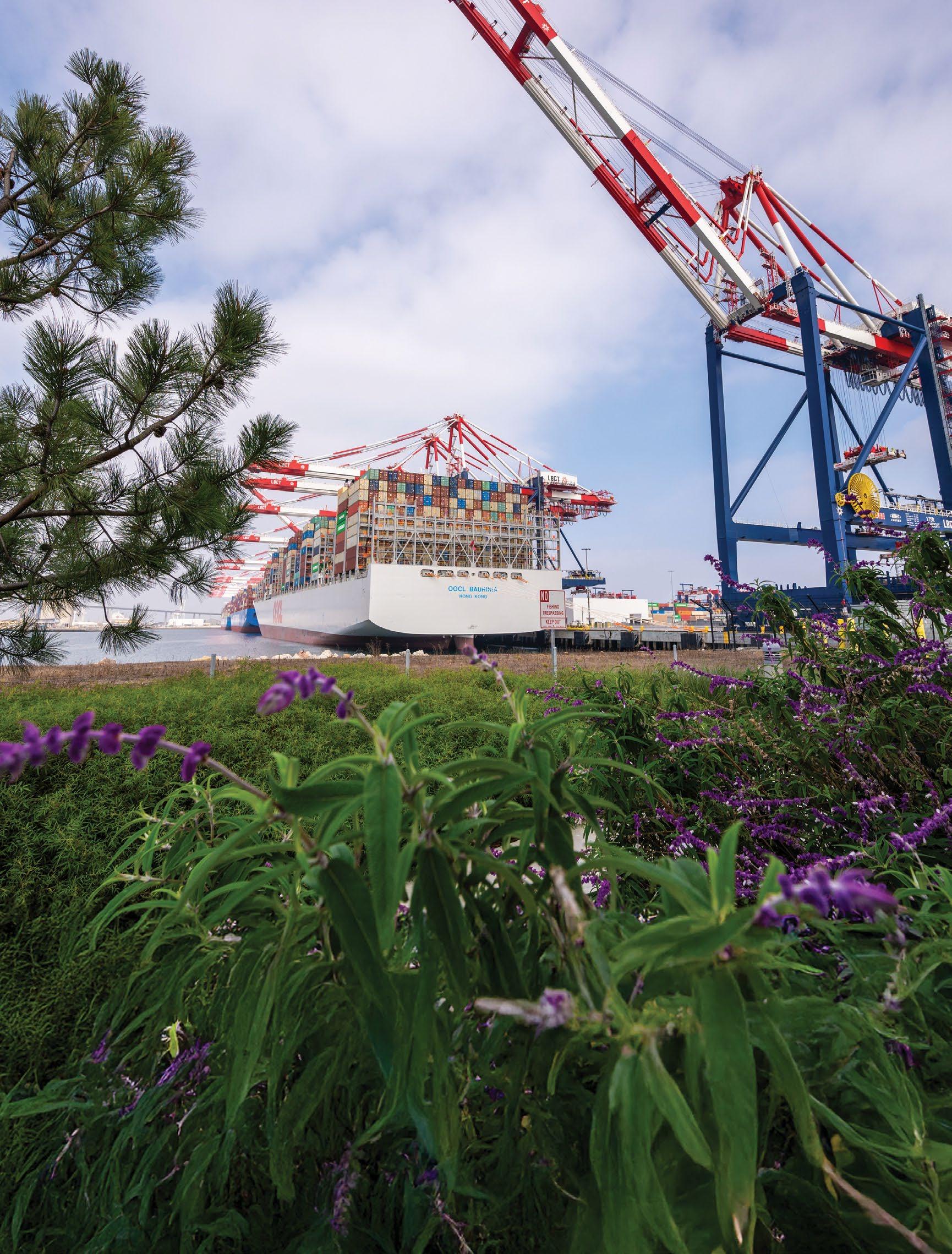
The Port of Long Beach is moving record amounts of cargo without backlogs or disruptions, and we’re doing it greener than ever, lowering emissions dramatically while keeping the supply chain moving and supporting millions of jobs.

have a good idea of what volume will arrive, on what day, at what place, and at what time. From there, we can plan the sorting capacities, vehicles, and delivery capacities accordingly,” he said.
“Although it’s relatively easy to create a demand forecast for the network, it can be a challenge to break it down to sites, shifts, and days. This means breaking down the volume and the structural data of delivery districts and planning how many delivery districts are needed on specific days, as well as preparing to change the setup of delivery districts if the volume changes.”
He said that DHL now has a system for real-time tracking based on a route-planning algorithm. “This is good for convenience because the better sense you have of when a parcel will arrive, the better you can plan your day and increase the chances of a successful delivery.”
“Let’s be honest about things,” Bo Thomson, director at EnVista, told BXJ. “We have an aging workforce, and we’re already having challenges on labor. So labor is going to continue to be the problem. And it’s going to push more automation in the distribution center.”
Warehousing is one part of the intermodal distribution equation that has been automated for years now, he said, but more needs to be done. And that can happen through financing where automation is brought into the lease. “There’s definitely some really interesting financing options that are starting to come about,” Klingberg said. “Because normally you’re financing the building. But now you’re financing everything within the building, rolling it all into a long term lease, so that you don’t have that heavy upfront capital requirement when you’re putting $50 million of automation into the warehouse operation.” X
Governor Wes Moore announced that the Helen Delich Bentley Port of Baltimore’s state-owned public and private marine terminals handled 45.9 million tons of cargo in 2024, making it the second-best ever year after 2023 when the port handled a record 52.3 million tons. More than 25.5 million of the nearly 46 million tons of cargo were handled during the last six months of 2024. The total cargo had a value of $62.2 billion, third-most in the Port’s history.
“The Port of Baltimore is one of the top ports in the nation and one of Maryland’s leading economic generators,” said Gov. Moore. “These numbers reveal the hard work happening at the Port to finish the year strong, despite a challenging start. We are especially grateful to our Port’s workers, whose indomitable spirit and dedication brought us to this moment. Our administration will continue to promote our great port with infrastructure investments that will help grow business and create additional jobs.
” The Port of Baltimore handled 848,628 tons of roll on/roll off farm and construction machinery, which again was number one among all U.S. ports. Baltimore also handled more imported forest products and imported gypsum than other ports. The Port handled 749,799 cars and light trucks in 2024, ranking second nationally. It also ranked second for salt and exported coal. Overall, the Port of Baltimore finished 10th nationally for total cargo and 11th for dollar value among U.S. ports. “The Port of Baltimore is a powerful economic engine for all of Maryland that supports hundreds of thousands of jobs,” said Maryland Department of Transportation Secretary Paul J. Wiedefeld. “While there is more work ahead in the Port’s recovery, these cargo numbers set the foundation for growth and a stronger year ahead.”
“We had a solid year in 2024 and are now fully focused on making 2025 even better,” said Maryland Port Administration Executive Director Jonathan Daniels. “Our terminal operators, private facilities, outstanding International Longshoremen’s Association labor, and incredible supply chain partners are primed and ready to make 2025 a very successful year.
Other significant achievements in 2024 for the Port of Baltimore included:
• The launch of double-stacked containers on rail to and from the port as part of the Howard Street Tunnel Project. A temporary route allowing double-stacked containers became operational in October along the CSX network in Pennsylvania, New Jersey, New York and onto the Midwest. When reconstruction work on the tunnel is completed in 2026, the permanent and more efficient route would go from Baltimore through the tunnel and onward into the Midwest. The Howard Street Tunnel project benefits from investment from the federal government, the State of Maryland, CSX and others.
• A new five-year contract with Carnival Cruise Line that keeps the world’s largest cruise provider serving the Port of Baltimore. The agreement took effect on January 1, 2025 and includes a five[1]year renewal option. Carnival offers five to 14-day cruises from Baltimore to wonderful destinations like the Bahamas, Bermuda, Caribbean and New England/ Canada
• For the 15th consecutive year, the Port received a top U.S. Coast Guard security assessment for its six state-owned marine terminals. In recent years, the Maryland Port Administration has installed high-mast lighting and fencing, stronger gate and fence line conditions, additional signage, and other physical security equipment. Heightened cyber security and access control initiatives coupled with the MPA’s closed-circuit television network have added to the robust and effective security program
The Port of Baltimore attained all of these achievements despite interruptions in service at the Port caused by the allision of the M/V Dali with the Francis Scott Key Bridge and resulting collapse of the bridge. But for the collapse of the Key Bridge, it is expected that 2024 would have achieved even better results
The Port of Baltimore generates about 20,300 direct jobs, with more than 273,000 jobs overall linked to Port activities.


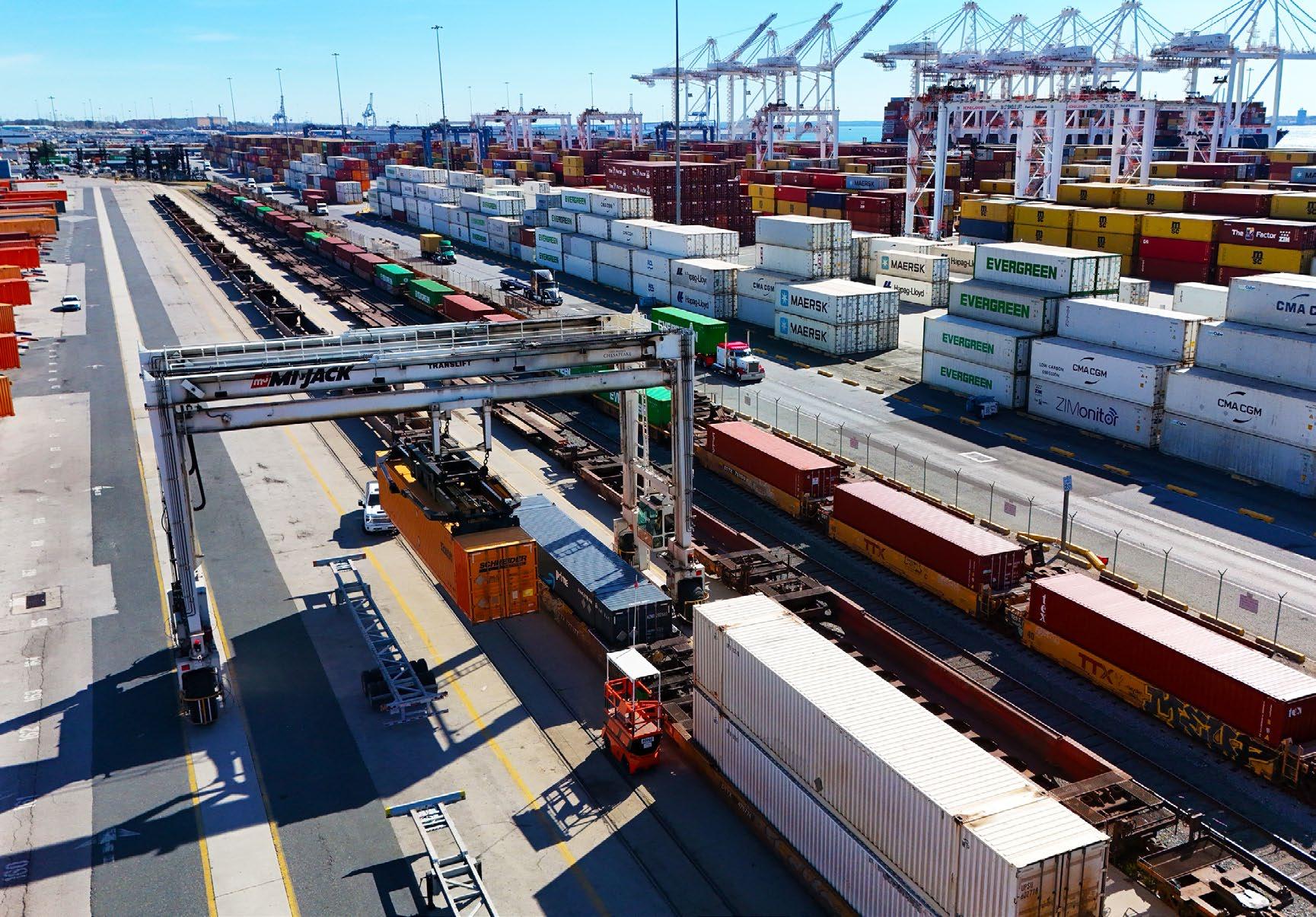
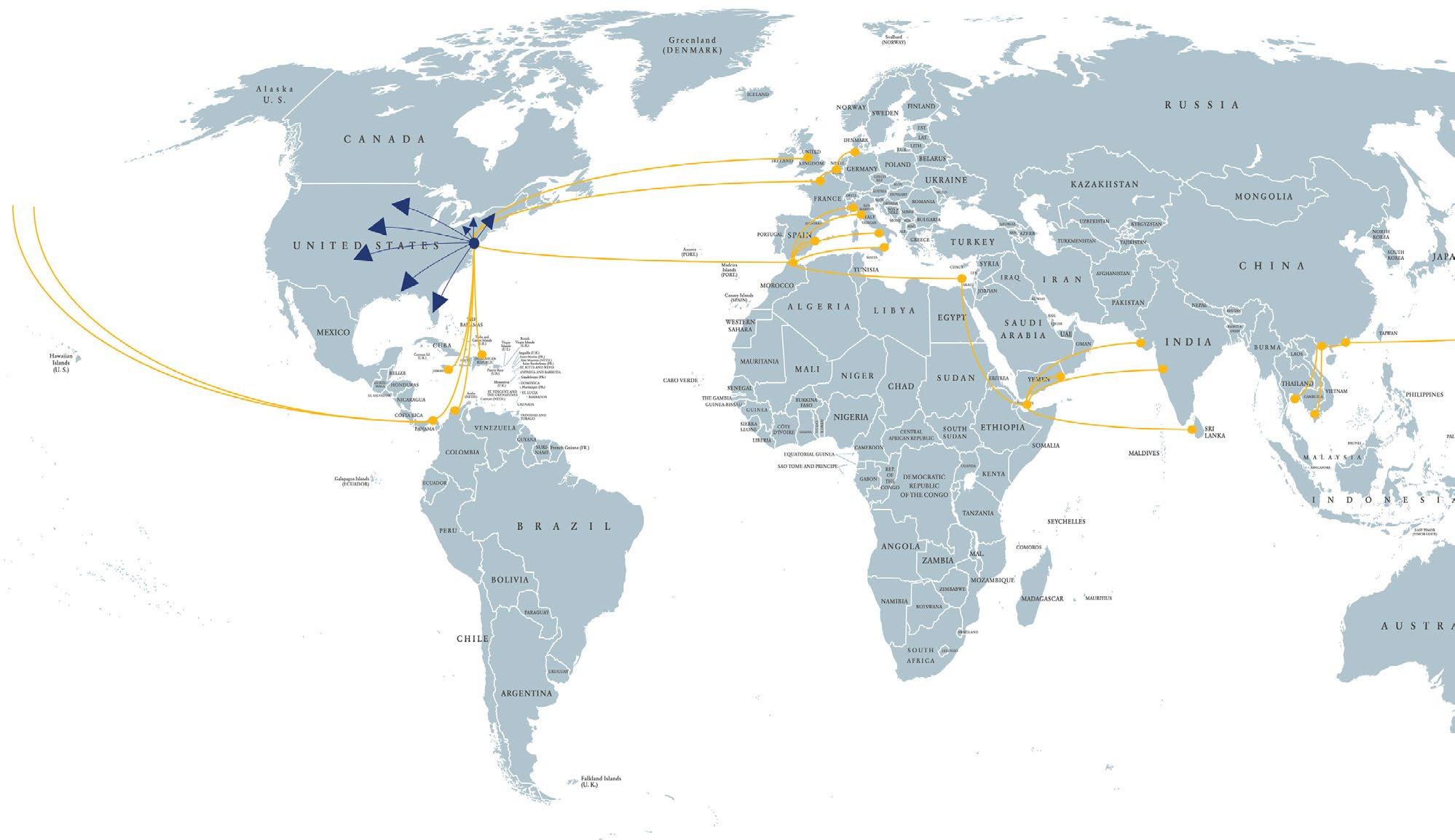


BY: DAVID HODES
Sustainability remains a priority in new airport development as airports build new terminals and add more digital systems assistance

Building and running an airport represents work across a broad swath of industry collaborators and developers in terminal design and expansion, runway capacity and layout optimization, cargo facilities and logistics, airside and landside infrastructure integration, and legal work with the FAA and land owners.
.........................................................................................................
Global air traffic continues to grow beyond pre-pandemic levels, according to the International Civil Aviation Organization (ICAO). Passenger numbers are expected to rise from 4.6 billion in 2024 to 12.4 billion by 2050.
Airport development is increasingly relying on new technology to manage its growth and operations. Advances from biometric identification to AI-driven operation and IoT-enabled systems have made managing airports more efficient, according to a report “The State of Airports in 2025: A Comprehensive Outlook,” by the UK-based Airport Information Systems (AIS). “The state of airport in 2025 reflects a new transformative change for the industry, characterized by technological innovations and a renewed emphasis on sustainable practice with enhanced passenger orientation,” according to the report summary.
The aviation sector is a major contributor to global greenhouse gas (GHG) emissions, according to a report by Jacobs, a global airport developer. “If the

current rate of growth continues unchecked, the International Civil Aviation Organization (ICAO) predictions show a tripling in CO2 emissions by 2050.”
The report went on to note that the Airbus manufacturer is expecting to achieve a mature technology readiness level for a hydrogen-combustion propulsion system by 2025, and that it has identified hydrogen fuel as potentially providing a net-zero commercial aircraft solution by 2035. “It is estimated that the use of hydrogen propulsion could reduce the climate impact of flights by 50% to 75%. Hydrogen is likely to become a competitively priced and accessible fuel.”
A position paper by the Airports Council International (ACI) found that the expected transition to zero- and low-emission aircraft may come about through the introduction of smaller electrified or hydrogen-powered aircraft for short haul.
Beyond the future of using hydrogen fuel, there is a significant push to incorporate sustainable building practices into new airport development right now.
One example is Delhi International Airport, which became the first airport in Asia to get Level 5 certification for net zero carbon emission status under the Airport Carbon Accreditation program,
which is a 7-level program launched in 2009 by Airport Councils International-Europe. It is the first global carbon management certification program for airports.
The Delhi airport has a 7.84 megawatt solar power plant installed in the airport, and works entirely on renewable energy.
King Abdulaziz International Airport in Jeddeh, Saudi Arabia is the most recent airport on the list of the accreditation program, at Level 2. The airport uses 340 solar panels generating 150,000 watts. It also has a 30 million square foot green space.
Many of the sustainable efforts have been built into new strategic plans for airports.
For instance, in December, 2024, the ICAO launched it’s a 2026-2050 strategic plan, “Safe Skies, Sustainable Future,” designed for a safe, secure, and sustainable global aviation system that will “increase connectivity, drive innovation, enhance safety and security, and shape an even more impactful future for global aviation.”
Under the plan, the ICAO wants airports to achieve net-zero carbon emissions by 2050 for international civil aviation operations.


The ACI position paper outlined one of the growing problems with airport development: capacity. “Ultimately, airports should be recognized as being the masters of their capacity. An airport which has little or no capacity available can find itself at the mercy of others in how its capacity is used and allocated,” the paper noted.
The paper also outlined a number of factors that come into play when trying to fix capacity issues. For example, optimization of runways and taxiways to make the best use of an airport’s physical infrastructure can be achieved through building rapid-exit taxiways, installation of routing and guidance technology, and improved taxiway design and layout.
The fix is needed now. The Eurocontrol Aviation Outlook 2050 report determined that the demand for air traffic in Europe is expected to grow 44% by 2050, with an expectation that that 3-12% of demand will not be accommodated by European airports in 2050.
Here’s a look at some of the noteworthy airport developments going on across the country:
• John Glenn Columbus International Airport. The $2 billion new terminal project that broke ground in December, 2024, will include a single checkpoint, opening to a central atrium with natural light and views of the airfield and skyline, 36
gates including two international arrival gates, and a new 5,000-space parking garage. It’s expected to be completed in 2029.
• Nashville International Airport. The airport began the design phase for its second major expansion, a plan known as New Horizon, in 2022. New Horizon will cost $3 billion, with development phased in over six years. The expansion project includes renovations to two concourses, plus baggage handling improvements and terminal access roadway improvements. Expected completion is 2029.
• Pittsburgh International Airport. The $1.5 billion new terminal project is 80% complete and on track to open this fall, according to a press release from the Allegheny County Airport Authority. It will dramatically increase the airport’s efficiency and include a number of new benefits for passengers, including a new roadway system and a multilevel parking garage.
• Portland International Airport. PDX 2045 is Portland International Airport’s master plan for continued airport updates, and is due to be finalized by 2026. But other work continues. The airport recently completed a $2 billion project for the main terminal under a related plan specifically for the terminal.
“Historically, airports have sat on a big piece of property, sometimes a small piece of property, like LaGuardia, sometimes a huge piece of property like Denver International,” Peter Kirsch told BXJ . Kirsch is a partner at Denver–based Kaplan Kirsch, one of the largest and oldest law firms working on airport development in the U.S.
“Airports have thought of the land as just vacant stuff around the airport to give a buffer between the airport and the community,” he said. “In the last half dozen years or so, airports have come to recognize that they are akin to the 21st century railroad station from the 19th century. That is, they are the front door to many, many communities. And as a result, there’s been a great deal of interest by the business community in locating facilities at or adjacent to airports. So airport real estate has become dramatically more interesting and valuable as an economic development tool, and airports therefore have gotten much more into the economic development business which introduces a whole bunch of new complexities.”
One example of an airport developing adjacent business is the New Century Air Center in Johnson County, Kansas, a general aviation airport that is part of the Kansas City metro area. It was developed into a very large facility for manufacturing, distribution and corporate offices on the airport property. “It doesn’t have commercial traffic,” Kirsch said. “But it’s a good example of how airports have taken their real estate and begun to realize the value that comes from being immediately adjacent to an airfield.” The center is now working on a master
plan to spend $50 million over the next 20 years in upgrades and improvements.
Major renovations or building new airports can take 20 to 30 years to reach fruition, Kirsch said. “So airports are looking at ways to optimize their existing facility.”
There’s a lot of that activity going on, as air travel has rebounded from the pandemic much faster than anyone expected, he said, and traffic is reaching record levels at vast numbers of airports around the country.
“The pressure for airports to do development is increasing at the same time that there’s pressure from outside the airports for development nearby,” Kirsch said. “So it’s a very dynamic time, and complicated, because of the complexity of regulations of covering how airports operate and how you can use land adjacent to airports.”
Common legal issues for airport development include federal regulations and compliance from the FAA, land use and zoning regulations, environmental regulations, national security regulations, noise concerns, and property rights, among others.
Congress has recently passed laws that make development around the airport much easier, Kirsch said, cutting years out of the development process for airport-adjacent commercial development. “It’s likely to accelerate that development,” he said.
It’s a brave new world for airport development. As reported by Markets and Markets, a research firm, most future airports will be implementing fully automated, contactless, and AI-driven solutions to increase security, efficiency, and passenger convenience.
With many airport megaprojects in development in areas such as the Middle East, Asia-Pacific, and Latin America, the need for new, technologically advanced airport systems will greatly exceed that of system upgrades, making new installations the dominant sector in the market for airport systems.
The report also found that North America is going to become the second-largest market for airport systems considering its vast airport infrastructure, modernization underway, and most optimized utilization of fresh technologies.
U.S. Federal Aviation Administration (FAA) and Transport Canada are spearheading next-generation air traffic management, cybersecurity enhancement, and biometric passenger processing across the North America region, pushing the requirement for airport system integration even more.
“Digitalization is amongst the key forces shaping the marketplace,” according to the report. “Airports are embracing cloud-based management platforms, predictive analysis, and IoT-enabled solutions for making improved real-time decisions and streamlining work processes.” X

BY JULIA WHEATLEY, MAYOR
The Town of Queen Creek is proud to be one of the five Member Communities of Mesa Gateway Airport Authority (MGAA, Authority), owner and operator of Mesa Gateway Airport (Airport, Gateway Airport). As Mayor, and the Board representative, it has been an honor to serve on the Authority Board of Directors for the past three years, and it has been a special privilege to serve as FY2025 Chair.
Gateway Airport is much more than a thriving commercial service airport in the greater Phoenix area boasting three expansive 10,000-foot runways and serving nearly two million total passengers annually. It is also a major economic catalyst, job creator and portal to the global marketplace. The Airport provides convenient and affordable nonstop jet service to forty-five destinations across the U.S. and the growing number of sun-seeking visitors using Gateway Airport each year contributes tens of millions of dollars to the regional economy for transportation, lodging, restaurants, retail purchases, entertainment, and outdoor activities. What truly sets Gateway apart from other regional airports is its extensive land holdings-nearly one thousand acres-and the united vision shared by its ownership group for strategic development and sustained growth.
Currently, Gateway Airport has two large master development opportunities underway and more than one-million square feet of aeronautical and non-aeronautical private development in various phases of construction. These projects promise to generate thousands of high-quality jobs both during construction and after completion.
Gateway East is a 273-acre Airport Business Park being developed on the eastside of the Airport by the Boyer Company of Salt Lake City. Their expansive, MGAA Board-approved master plan includes a mix of office, manufacturing, industrial, and commercial retail development opportunities. Gateway East just received the REDI Site Gold Designation by Site Selectors Guild, demonstrating their commitment to providing high quality shovel ready development opportunities. The Boyer Company is currently constructing a 275,000 square foot manufacturing facility/U.S. Headquarters for XNRGY Climate Systems, a fabricator of high-end climate systems for data centers, hospitals, and other industrial and institutional buildings. This $68 million project alone is projected to create up to 700 jobs. Additionally, groundbreaking will soon occur on a new five-story, 125-room SpringHill Suites by Marriott hotel, alongside retail and restaurant spaces designed to support developments such as the Gulfstream West Coast Service Center and surrounding entertainment venues.
At the Airport’s southern end, SkyBridge Arizona, a 360-acre aviation logistics, manufacturing, and air cargo hub, has already invested tens of millions of dollars in essential infrastructure. Having recently completed extensive phase-one roadwork and basic infrastructure, SkyBridge Arizona has several exciting projects moving forward. Two 250,000 square foot industrial buildings have just been energized, and planning is underway for multiple hangars dedicated to cargo and logistics operations.
As Chair for FY2025, I am genuinely excited and inspired by the numerous groundbreaking and ribbon-cutting ceremonies scheduled throughout the coming year. Mesa Gateway Airport continues to set the standard for innovation and economic vitality among airports nationwide, and I am confident that the best is yet to come!
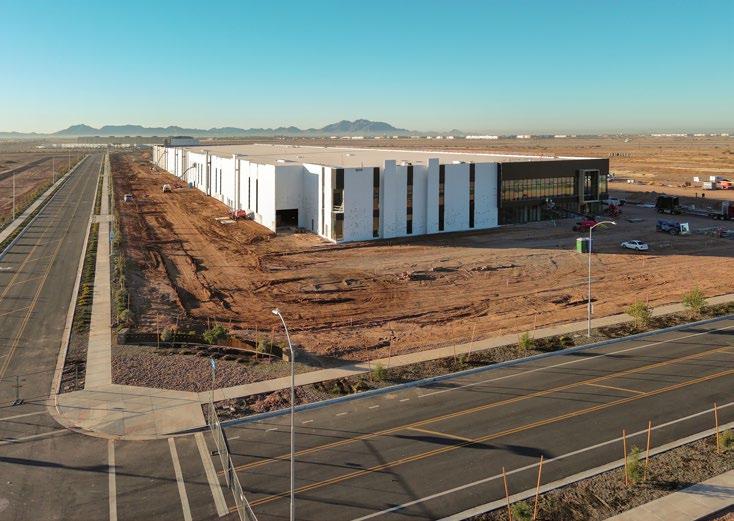
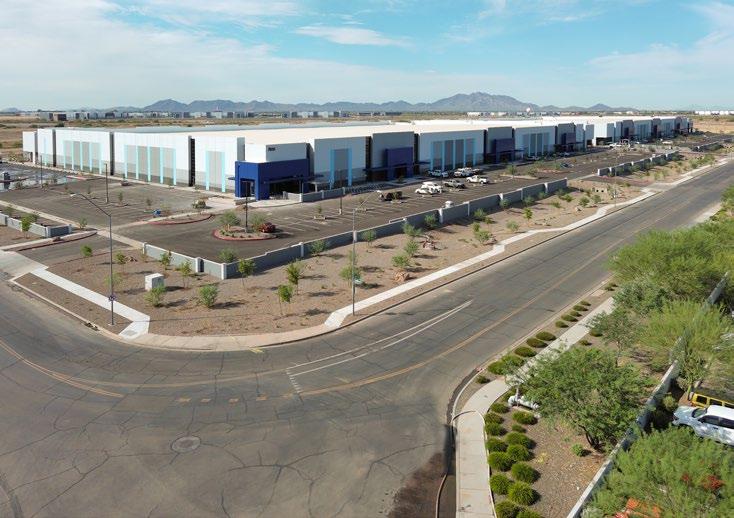
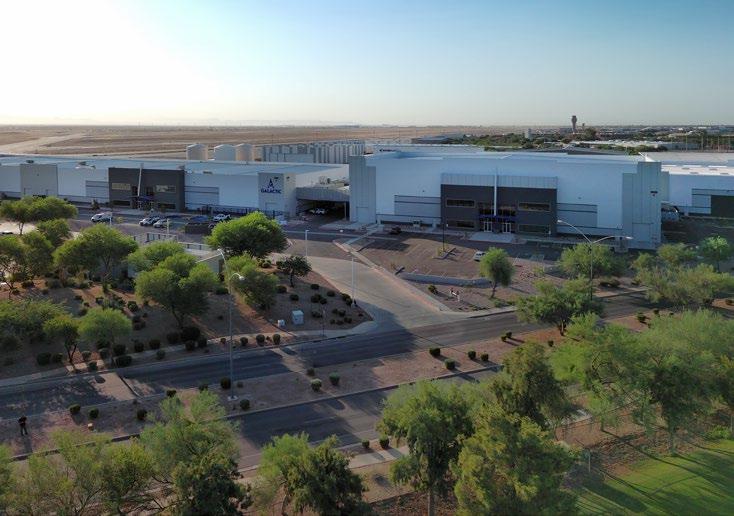




BY: DAVID HODES
Artificial intelligence for responding to demand, and OEMs bringing suppliers closer to manufacturing operations, are two solutions being explored

Logistics is one of the most challenging issues facing most manufacturers—getting product from one location to another, sometimes over great distances, often using many modes of transportation through sometimes difficult countries or territories.
It involves complex demand forecasting and inventory management; supply chain visibility and end to end tracking; resiliency and flexibility in supply chains; and managing a whole host of other dynamic variables related to geopolitics, weather, natural disasters, and even global pandemics.
Tariffs have caused a lot of concern among shippers. The fallout is beginning as of this writing, but no one is able to make predictions as to how they will actually affect the logistics business.
LOGISTICS DEVELOPMENTS
There are many interesting logistics developments. Here is a selection:

• FedEx Freight announced in December, 2024, that they will spin off FedEx Freight from the larger FedEx entity within the next 18 months. The separation move “will allow for more customized operational execution along with more tailored investment and capital allocation strategies to serve the unique and evolving needs of both the global parcel and LTL markets,” according to a company press release.
• United Parcel Service (UPS) has decided to accelerate a plan to cut millions of deliveries for its largest customer, Amazon. com, according to a Reuters report. UPS plans to shrink Amazon volumes more than 50% by the second half of 2026 to allow the company to focus on fewer but more lucrative deliveries while it also cuts about $1 billion in costs for buildings, trucks, planes and labor, executives told Reuters.
• In December, 2024, U.S. container import volumes closed at 2,367,271 twenty-foot equivalent units (TEU), just shy of the 2.4 million TEU threshold that has typically strained port capacity,
according to the January Global Shipping Report from Descartes Systems Group. Overall transit delays decreased across the top 10 U.S. ports. Following two months of volume declines, December imports from China were up by 1.7% to 902,519 TEUs and by 14.5% over December 2023, highlighting the continued strength of U.S.-China trade. In 2025, U.S. importers face risks on several fronts, according to the shipping report, including tariffs and geopolitical instability in the Middle East.
One of the more recent concepts for logistics involves electric vehicles (EV), where EV car manufacturers are putting battery factories near to assembly plants to reduce travel time and keep an expensive production line humming.
For instance, LG Energy Solution created a joint venture with Honda Motor Company in August, 2022, to produce lithium-ion batteries in the U.S. to power Honda and Acura EV models for the North American market. The battery company was then formally established on January 13, 2023, with production to begin by the end of 2025.
That sort of partnership is not unique to Honda at all, Tom Lake told BXJ. Lake is a supply chain consultant with PLG Consulting and the former senior vice president with Honda Development and Manufacturing of America.
Lake pointed to other similar partnership deals, such as the Ford Motor Company and Blue Oval battery manufacturer deal arranged with the U.S. Department of Energy’s (DOE) Loan Programs.
In December, 2024, the DOE gave $9.63 billion to Blue Oval for the construction of up to three manufacturing plants to produce batteries for Ford Motor Company’s future Ford and Lincoln electric vehicles EVs. The plants, one in Tennessee and two in Kentucky, would enable more than 120 gigawatt hours of battery production each year.
“All things remaining equal, a shorter supply chain is always better,” Lake said. “But the direction is the same, which is to try to create and secure a supply chain in the immediate area, however you define that, so that you’ll have a complete, efficient EV value chain from raw materials through end product. The battery is absolutely a critical part. You could liken it to the powertrain, the engine of the combustion engine.”
The days of getting the cheapest part from wherever it is made for an automobile manufacturing operation are over. “A part is not cheap when it doesn’t arrive,” Lake said. “The costs to your operation, the costs of losing the opportunity of the sale, will quickly offset any benefit of potentially lower labor rates or things like that in other parts of the world.”
It’s often a procurement leader’s job to calculate the benefit of bringing a product from far away lands, he said, and when everything works perfectly, that model makes sense. “But as we all know, we don’t live in that world. And when things don’t work perfectly, that’s when the costs start to go up, not to mention disruptions to your own production and inability, ultimately, to deliver to your customer.”
He said that OEMs are going deeper into the EV supply chain to try to secure everything from the critical materials themselves to the processing of those materials to other components in the battery


The advanced infrastructure of the Logistics Park Kansas City consists of 443 acres, 750,000 annual unit capacity, eight wide-span all-electric cranes, and 4,300 container stacking spots.
or in the battery pack, which is a larger system. “They are doing that to ensure that they have adequate supply, because there is some element of scarcity, or there may be in the future,” he said. “Secondly, they have partnered with companies that continue to supply the latest technology, whatever it may be down the road.”
One of the EV supply chain auto maker’s newest companies is Tesla, a company that has been at the EV supply chain business for year. “They’re continuing to launch factories that try to push the envelope for the ultimate point of insourcing versus outsourcing,” Lake said. “A lot of the legacy automakers have been following a model for many years that is rooted in the combustion engine and their current supplier partnerships. But Tesla has they had the opportunity to start fresh with EVs, and now they see the benefit of that. They continue to push that envelope.”
The automotive industry appears to have a sort of legacy leadership role in logistics. There are other industries that rely heavily on logistics to be sure. But Lake said that the automotive industry has really been driven to push the envelope of procurement innovation and supply chain innovation out of necessity.
“It’s dealt with so many huge struggles just even in recent times with covid, with semiconductor shortages, with labor challenges and on and on that it has had to innovate to make sure that it can keep running its operations and delivering product to the customers,” he said.
What is affected by the use of artificial intelligence is automakers ability to predict demand, Lake said. “I’m talking about one use of the technology. But the more accurately that you can predict demand, particularly in the type of market we’re in today, where there’s so
much uncertainty, the more smoothly your supply chain can operate.
“When the automaker changes a production schedule or their plans in any way, there’s kind of a whip effect through the supply chain,” he said. “And that’s where, if it’s a small change within the automaker, such as we’re selling more blue ones this week, the ripple effect across the supply chain can be much more dramatic. Using an AI tool to try to more accurately predict and schedule production is a huge factor in the stability of the supply chain.
“We have a lot of things on the horizon that the procurement and supply chain professionals are going to have to adapt to as they try to make sure that that their company stays on pace with those changes and remains competitive,” Lake said.
What’s happening now in logistics includes uncertainty about fuel price that are squeezing the margins for logistics companies; disruptions in transcontinental transport; diversions of air, road and rail routes from conflict zones; staff shortages as a result of workers not returning from loses during the pandemic; and container backlogs at ports, which has eased somewhat since the pandemic-delay peak in 2021. But events such as geopolitical unrest causing shipping diversion, and worker strikes at east and gulf coast ports, are still causing challenges.
KPMG, an advisory service firm, reports that reshoring the supply chain as a result of these and other global disruptions—such as tariffs—should be investigated. “Chief supply chain officers are seeking new strategies to ensure the smooth delivery of goods, system efficiency, profitability, and—most importantly—risk mitigation,” according to the advisory.
Supply chain leaders need to begin exploring the comparative
benefits of reshoring, nearshoring (moving operations to a nearby country), friendshoring (prioritizing from countries considered geopolitical allies), and insourcing, realizing that the shorter the distance between product and customer the faster and cheaper the delivery.
“It is clear that global-trade patterns are shifting,” the advisory continued. “Supply chains are diversifying away from their reliance on China and India to Southeast Asia, Eastern Europe, and North America.”
Shifting all or part of a supply chain to new geographies should be an incremental process, according to the advisory, telling supply chain leaders to take time to assess which products and/or processes to transition first and proceed in phases. “Phase one may involve pilot tests, followed by make/buy analyses on a region-by-region basis. During this process, ensure you evaluate the depth of each localities industrial base.”
Then, re-evaluate. “Progress doesn’t stop with the transition. Continuously monitor and assess the performance of your onshoring, nearshoring, friendshoring, and insourcing efforts and make adjustments and improvements as necessary.” X
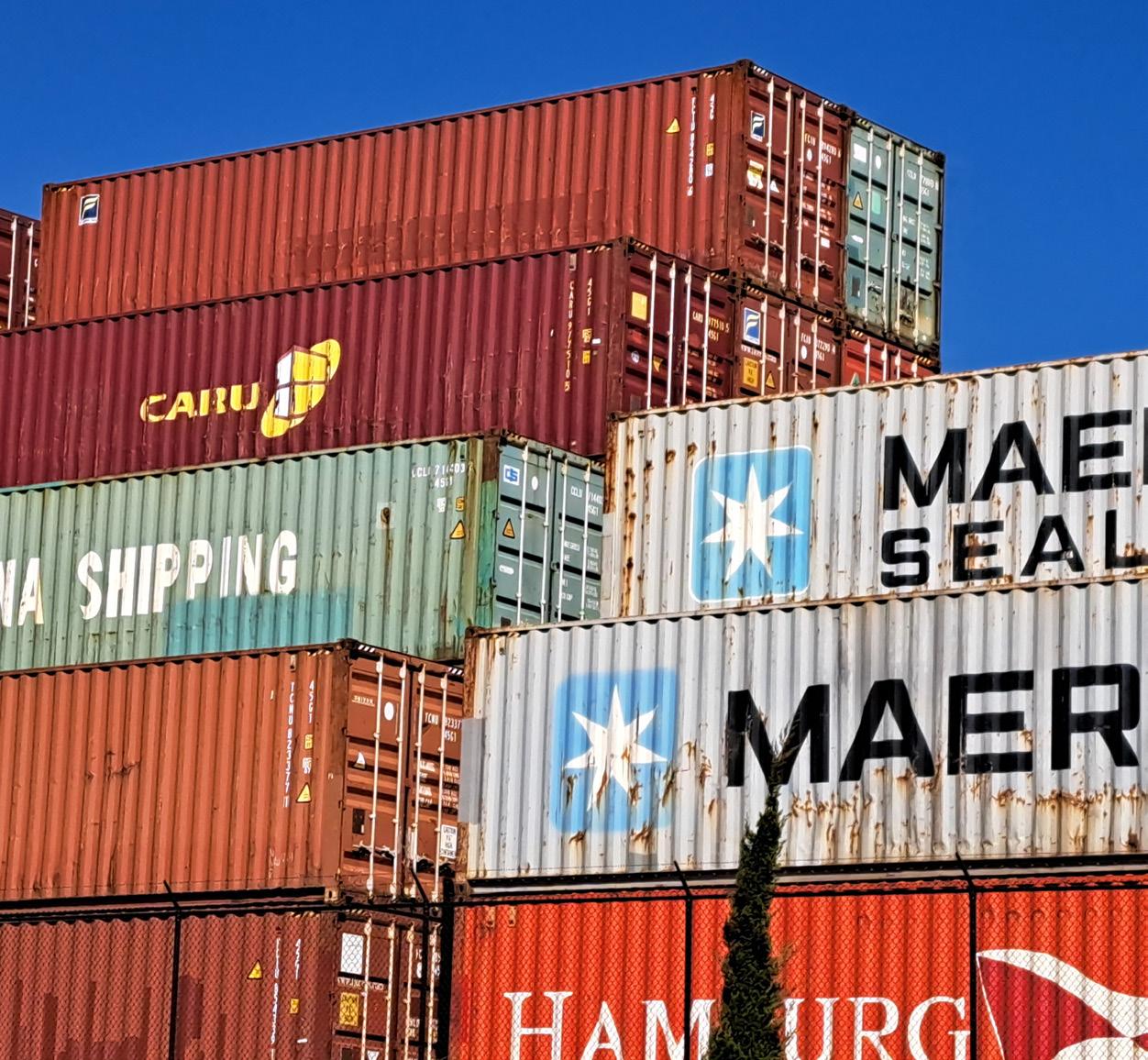
TOP: A container crane standing by at the Kansas City Logistics Park. BOTTOM RIGHT: BNSF Railway is the main tenant at the Logistics Park Kansas City, described as a world-class inland port with the capacity of 15.5 million square feet of distribution facilities. BOTTOM LEFT: California invested $27 million in grant funds to develop data interoperability across its five containerized ports, including data infrastructure expansion. Picture courtesy Governor’s Office of Business and Economic Development.


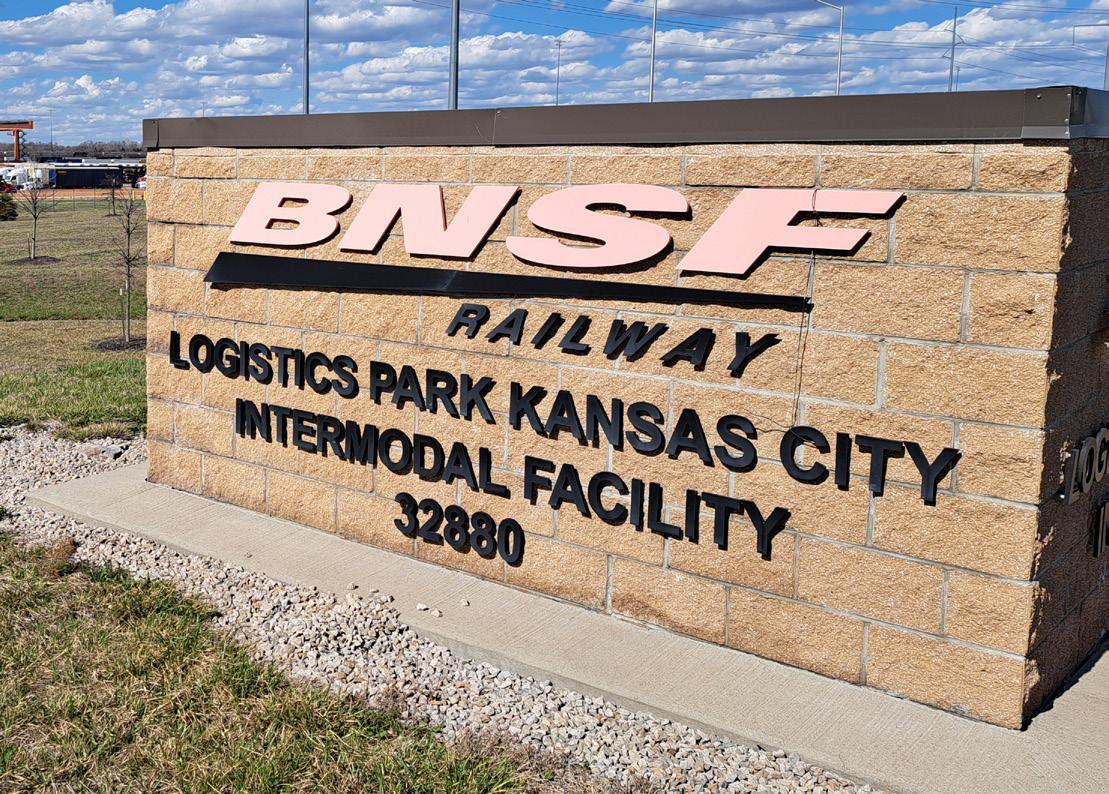

From a skilled, growing workforce to low taxes and competitive incentives, everything is bigger and better in Texas.
From a civilian workforce of more than 15 million, to unrivaled investment in accessible infrastructure, to one of the nation’s largest deal-closing funds — Texas is proud to offer the most advantageous business climate for expanding and relocating companies. It’s why Toyota and Charles Schwab have moved their corporate headquarters from California to Texas; Apple has opened a new Austin campus with the ability to grow to 15,000; Tesla relocated their headquarters to Texas and SpaceX has continued to invest throughout the state in office, development and space launch facilities.
Texas offers businesses the freedom to be successful and for their employees to be successful. Texas has no personal or corporate state income tax and a reasonable regulatory
climate. Chief Executive Magazine has ranked Texas “the #1 state for business” for 20 consecutive years. Amazon, Tesla, HP, and Oracle have all moved to or expanded their operations in Texas. When combined with steady employment and income growth, forecasters rank Texas first in the nation for five-year growth projections.
• Texas has a diverse economy: Though Texas does have a strong oil and gas sector, the state’s economy is also strong in other sectors such as aerospace, automotive and IT technology, advanced manufacturing, and life sciences. Businesses here can build on the success of others. The growing, thriving marketplace has plenty of room for healthy competition and advantageous networking.
• If Texas was a country, it would be the world’s 8th largest economy: Not only do diverse industries comprise our economy, but our state, if it were a country, is also 8th largest economy in the world — surpassing Brazil, Italy,

Russia, and South Korea with a GDP of $2.4 trillion. “Made in Texas” is a powerful label that translates to quality all around the world.
• Texas has access to top labor talent: Texas boasts a vast, talented — and younger —labor pool than other states competing with Texas for new business projects. The Texas workforce’s younger average age means Texas businesses have the talent pipeline to be successful now and in the future.
• Texas has a highly competitive tax climate and incentives: The cost of doing business in Texas is below the national average. With a comparatively low cost of living and tax rate, Texas is an ideal state for startups. State incentive programs are built on dedicated corporate tax credits, jobcreation incentives, rebates, and reductions – particularly in the manufacturing, agriculture, and healthcare industries.
• Texas invests in infrastructure: It's substantial size and central location make the state a major hub for national and international air, ground, and ocean shipping. Texas is the No. 1 exporting state in the United States and the No. 1 state for foreign direct investment, in part due to its location and infrastructure.
Texas offers a range of incentives for businesses:
• The Texas Enterprise Fund (TEF) is one of the largest “deal-closing” fund of its kind, used for competitive capital investment and job creation.
• The Governor’s University Research Initiative offers grants to the best and brightest researchers arriving at Texas institutions.
• The Texas Skills Development Fund helps businesses customize training programs through local colleges and technical institutes to subsidize costs associated with upskilling and reskilling.
These are just a few of the many generous incentives the state offers to reward local companies. Texas offers a wide variety of nonprofit and government-backed programs that provide funding to large and small businesses. For years, Silicon Valley in California has attracted businesses with its pleasant climate, educational opportunities, and booming tech industry. However, numerous Texas cities have emerged as ideal solutions to California’s high taxes, costly real estate, and restrictive regulatory environment.
• Hewlett Packard moved its headquarters from San Jose to Houston
• Oracle relocated its headquarters from Redwood City to Austin
• Amazon chose Houston as one of its coveted “tech hubs”
• Elon Musk moved from California to be closer to his
Austin Tesla southwest Gigafactory and relocated Tesla headquarters to Texas
Small businesses in Texas regularly see significant growth year-over-year. Entrepreneurs who have moved here frequently comment on the positive differences they see, not only with their bottom line, but also in their quality of life. In Texas, they enjoy low taxes, quality education, beautiful spring and fall weather, and a vibrant culture. When employers are “off-theclock,” they enjoy a range of cultural offerings, from state parks, lakes, rivers, rodeos and working ranches, to live music, wineries, museums, and art galleries.
The Texas Economic Development Corporation (TxEDC) is an independently funded and operated 501(c)(3) nonprofit organization responsible for marketing and promoting Texas as a premier business location. Along with the Governor’s Office of Economic Development & Tourism (EDT), these two highly focused organizations make up the cornerstone of Governor Greg Abbott’s economic development strategy to build a stronger Texas. For more information, please call 512-981-6736 or visit www.businessintexas.com
Nestled in the heart of the Texas Hill Country, the Marble Falls Economic Development Corporation (MFEDC) is dedicated to fostering sustainable growth, supporting local businesses, and attracting new investment to the vibrant Marble Falls community. With a business-friendly environment, strategic infrastructure initiatives, and a commitment to enhancing quality of life, the MFEDC empowers entrepreneurs and innovators to thrive. Whether you’re launching a startup or expanding an established enterprise, Marble Falls offers the perfect blend of opportunity, charm, and support to help your vision succeed.
Target industries for the Marble Falls area include light manufacturing, professional and IT services, specialty distribution, health and wellness as well as niche retail. Marble Falls is strategically located as a hub for surrounding rural communities and tourists. The public sector (schools and local government) provides a stable employment foundation, while the private sector is fueled by businesses that cater to regional needs (shopping, medical care, dining, and recreation). Recent expansions – from a new hospital wing to a forthcoming hotel and conference center – highlight a community on an upward trajectory. Marble Falls’ economy in 2025 is marked by sustainable growth and diversification, with steady job creation in its dominant sectors and ongoing investments that promise to enhance the area’s role as the economic heart of the Highland Lakes region.
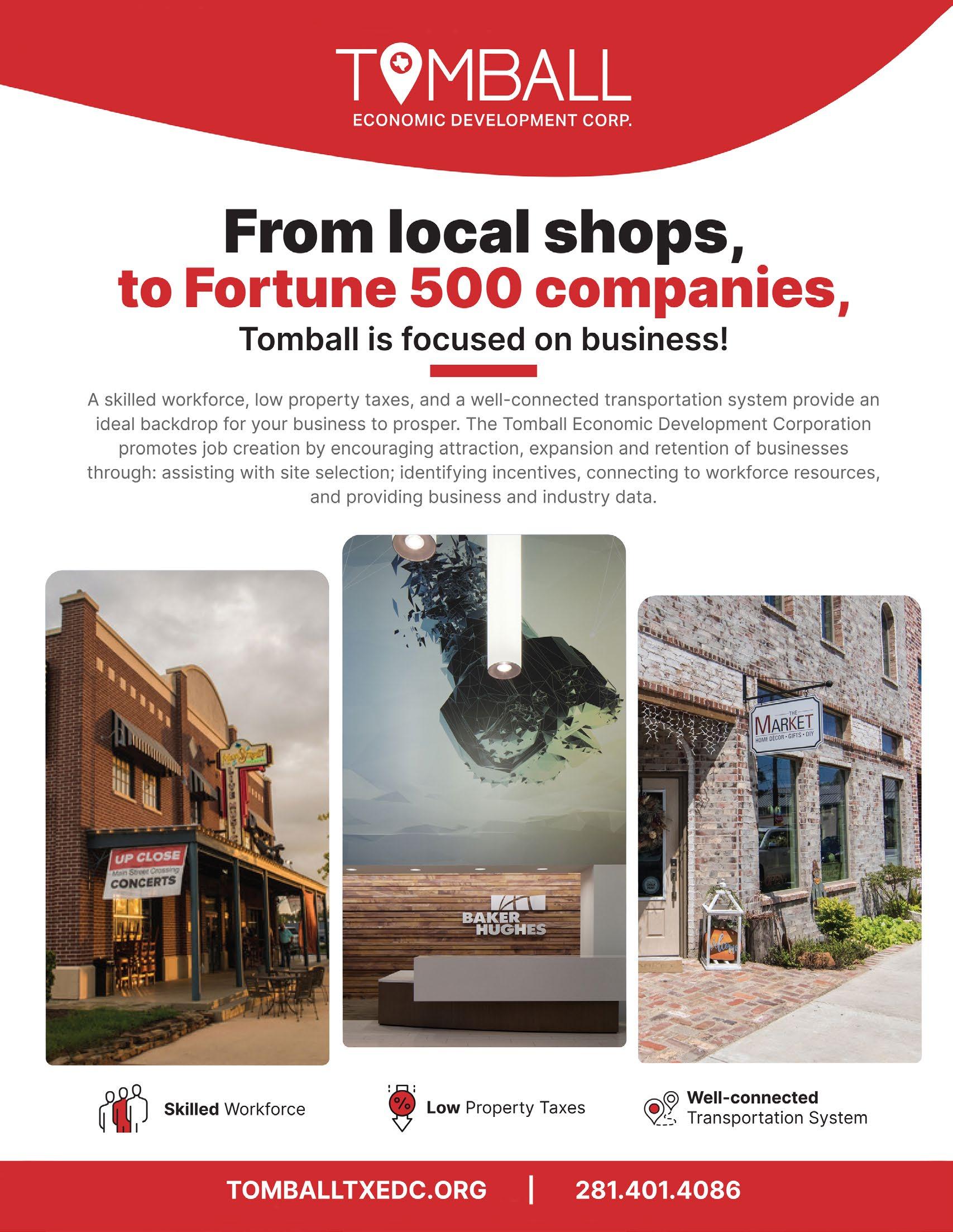
Marble Falls offers excellent modes of transportation to move goods to and from the area. Trucking (road freight) is the most common mode used to move goods to and from Marble Falls. Being located along US Highway 281 and State Highway 71, these roadways offer solid access to regional hubs while connecting to distribution centers in Austin (~50 miles away) or San Antonio (~85 miles away).
Marble Falls is a small city (population ~ 8,500) with a median age of about 48 years. The educational attainment of the Marble Falls workforce is moderate. Nearly 90% of adults (25 years and over) have at least a high school diploma. Just over 33% of adults hold a bachelor’s degree or higher, which is on par with the Texas state average.
Recent data show about 3,550 residents employed in 2022, growing to approximately 3,640 employed in 2023. This growth (about 2.45% increase) suggests a modestly expanding workforce. Correspondingly, the unemployment rate in Marble Falls is very low – on the order of 3%-4% in recent years. This is below state and national averages, highlighting near full employment in the city.
Marble Falls’ workforce is fairly diverse but largely concentrated in service sectors: retail and hospitality together employ a large share of workers, followed by significant employment in healthcare, education, and construction.
Marble Falls is often considered to have a high quality of life, especially for those who enjoy small-town charm, access to nature, and a slower pace of living. Other contributors to this quality of life are: scenic beauty, a low crime rate, a relatively low cost of living, and proximity to larger cities.
Recreational activities include: boating and fishing; kayaking and paddleboarding; hiking and biking; camping and picnicking; wildlife and bird watching; caving and geology; golfing; scenic drives; adventure parks; and local events and festivals.
The Marble Falls Economic Development Corporation welcomes you to learn more about this business-friendly environment. Please contact Christian Fletcher or Midge Dockery at 830-798-7079, or visit their website at www.marblefallseconomy.com
Tomball, Texas is in a position to thrive due, in part, to its advantageous position near Houston in one of America’s fastest growing metropolitan areas.
Nestled in the third most populous county in the United States, Tomball is home to more than 1,500 businesses featuring nearly 15,000 employees. Fueled by its collaborative spirit, welcoming nature and superior work-life balance, the city saw its population increase by 20 percent from 2014 to 2019. Tomball’s population is expected to surge from 12,679 to more than 20,000 by 2030.
With roots dating back to the early 19th century when it was a railroad hub, Tomball is rich both in history and modern-day opportunities. Since 2011, the Tomball Economic Development Corporation (TEDC) has aided in creating more than 5,000 local jobs by delivering nearly $500 million in capital investment from businesses. TEDC assists with funding infrastructure costs for eligible projects like streets and roads, utilities, drainage, site improvements and telecommunications enhancements.
Tomball Marketplace Shopping Center provides easy access to popular national retailers like Target, Academy Sports and Outdoors and Kohl’s. Costco pinpointed the corner of Highway 249 and Holderrieth Road in Tomball for its 40th location in Texas. The multibillion-dollar global retailer opened the doors to its 152,000 square foot Tomball store in August 2024 and is estimated to deliver $651 million in sales during its first six years of operation.
Less than two miles from Costco, The Grand at 249 is a 65-acre mixed-use retail development nearing completion. Down the street in Interchange 249, a planned three-millionsquare-foot industrial/retail complex, Macy’s opened a 900,000-square-foot fulfillment center and has evolved into a distribution dynamo with its 105 employees who are responsible for any items customers see in a Macy’s store located in Texas, Louisiana, Oklahoma, Arkansas or some parts of Alabama.
Businesses based in Tomball reap the benefit of convenient travel to key points in and around Houston via major transportation options. George Bush Intercontinental Airport (IAH), less than a half hour drive from Tomball, serves as a key advantage for local businesses. IAH helps bring the world to Tomball with 25 airlines flying nonstop to five continents from Bush Intercontinental Airport. State Highway 249 (The Tomball Parkway) and the recently completed State Highway 99 (The Grand Parkway) run directly through Tomball while Interstate 45 and Beltway 8 are each merely minutes from the city. These highways provide easy access to downtown Houston and all markets from Dallas to Galveston. With roughly 7 million people in the Houston area, Tomball is in a prime spot to reach a massive number of customers and job seekers.
In fact, a job-ready workforce is available to Tomball employers right in their backyard. The award-winning Tomball Independent School District, serving more than 18,000 students across 20 campuses, has received consecutive “A” ratings from the Texas Education Agency. The TEDC worked closely with Tomball ISD, Lone Star College-Tomball and HCA Houston Healthcare Tomball to launch Tomball ISD’s Early College High School for Pathways (P-TECH) initiative. Focused on training students to meet healthcare job needs and providing immediate access to healthcare jobs upon graduation, the P-TECH initiative was recognized with a Texas Economic Development Council Workforce Excellence Award after its inaugural year.
The city’s prime location makes it easy for businesses to
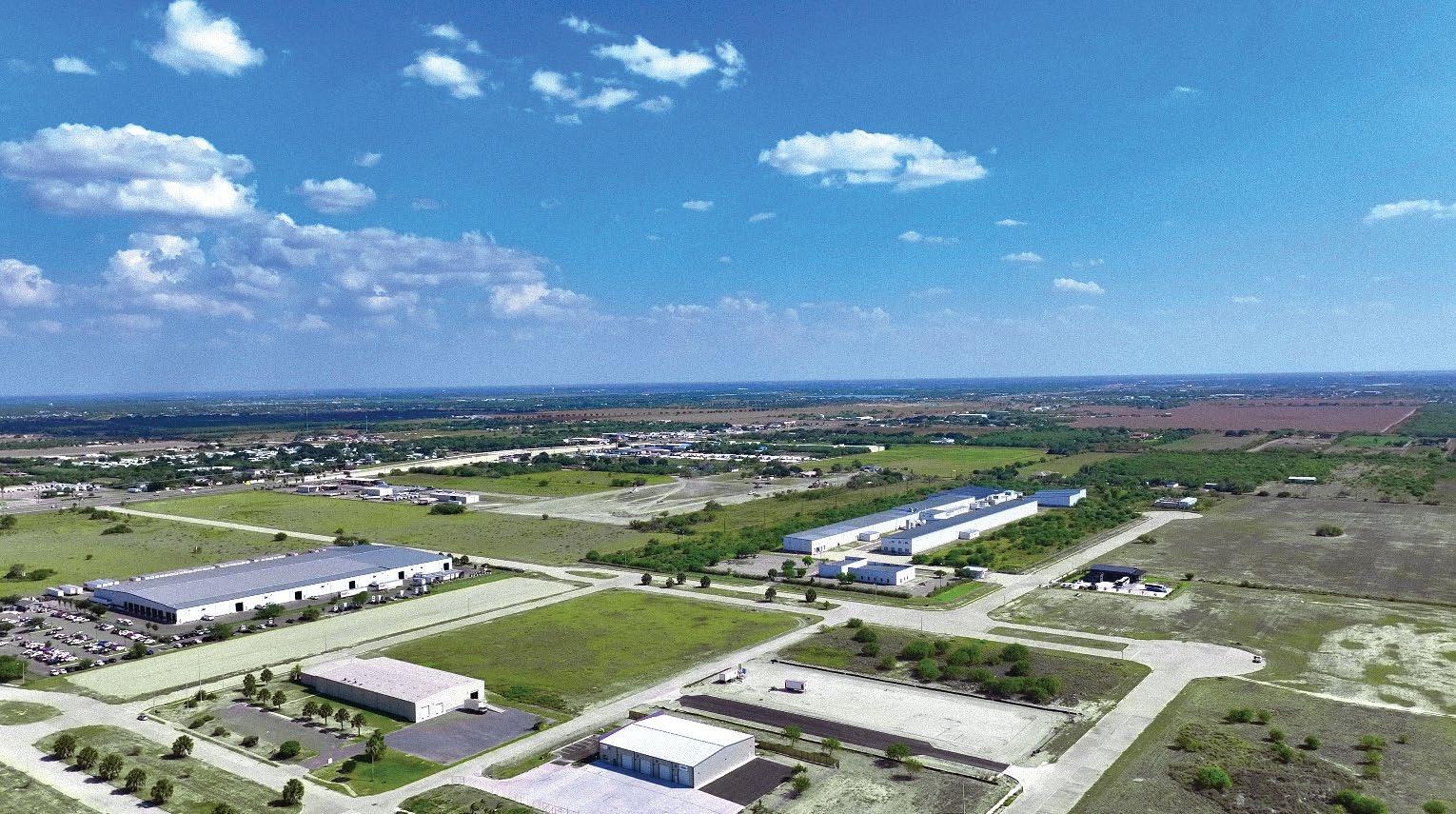

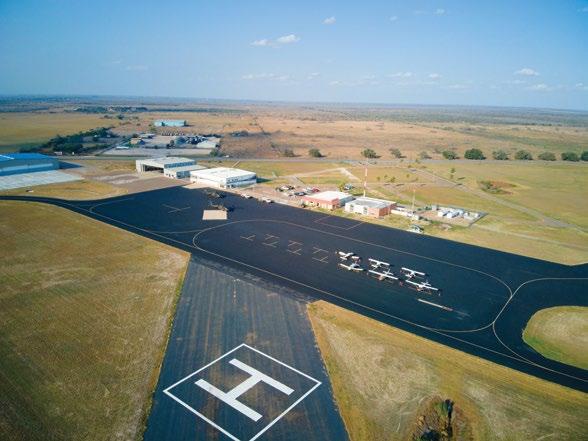
get to Tomball, but they choose to stay in Tomball because of the logistical advantage offered through infrastructure and a business-friendly mindset. Visit www.TomballEDC.org for more information.
Edinburg, TX boasts a diverse business landscape, with key industries in healthcare, logistics, warehousing, government, and food processing. Major employers include DHR, South Texas Health System (STHS), and Driscoll Children's Hospital, solidifying healthcare as a dominant sector. Edinburg’s prime location along I-69 has also attracted logistics and warehousing companies, while the government sector remains a major employer, as the city serves as the Hidalgo County seat.
The Edinburg Economic Development Corporation (EEDC) is focused on expanding high-paying job opportunities, particularly in healthcare, logistics, and advanced manufacturing. With Edinburg’s rapidly growing medical sector, efforts are underway to attract biotech and life sciences companies to complement its existing hospitals and medical institutions.
Edinburg offers a high quality of life, combining urban amenities with a strong sense of community. The city is home to The University of Texas at Rio Grande Valley (UTRGV), a leading research institution and the only university south of San Antonio with a School of Medicine and Podiatric Medicine. In Fall 2025, UTRGV will launch its Division 1 football program, further elevating the city’s profile.
Edinburg’s commitment to arts, culture, and recreation is evident through investments in the Arts, Culture, and Events Center (ACE) and other quality-of-life projects. The city also hosts 400 cultural arts events, programs, and festivals annually, fostering a vibrant, growing community. Residents and visitors can explore these attractions through ExploreETX.com, a dedicated platform showcasing Edinburg’s many assets.
As a four-time All-America City, Edinburg is dedicated to enhancing quality of life while fostering workforce development, making it an ideal place to live, work, and invest.
Edinburg’s workforce is young, skilled, and diverse, supported by a strong educational pipeline. The city’s bilingual talent is an asset for businesses operating in South Texas and international markets. Healthcare remains a leading employment sector, while logistics, government, and retail also contribute significantly to the job market.
Edinburg benefits from a robust educational infrastructure, with UTRGV and South Texas College (STC) driving workforce development. UTRGV’s School of Medicine and Podiatric Medicine train highly skilled healthcare professionals, while STC provides customized workforce training programs tailored to
industry needs.
Additionally, UTRGV houses the Texas Manufacturing Assistance Center (TMAC), which offers affordable consulting, training, and technical management services to help companies accelerate growth and enhance operations statewide. The EEDC partners with local institutions to provide workforce development grants, ensuring businesses have access to skilled talent ready to meet industry demands.
Edinburg provides a variety of recreational, cultural, and entertainment opportunities. The city is home to Bert Ogden Arena, a 9,324-seat venue that hosts major concerts, sporting events, and performances throughout the year.
For nature enthusiasts, the Edinburg Scenic Wetlands & World Birding Center spans 40 acres, offering birdwatching, walking trails, and educational programs in a serene setting. Municipal Park, featuring new AstroTurf fields, serves as a hub for local and regional sports tournaments.
Edinburg’s arts and culture scene continues to grow, with investments in the Arts, Culture, and Events Center (ACE) and the city’s commitment to hosting hundreds of cultural events and festivals annually. These amenities, combined with an active community, make Edinburg an exciting place to live, work, and visit.
Edinburg is strategically positioned along I-69, a major transportation corridor that streamlines regional and international trade. The city’s proximity to international bridges provides direct access to Mexico, supporting commerce and logistics.
The South Texas International Airport, a municipally owned facility, features a 5,000-ft runway with plans to expand to 7,600 ft. The airport is equipped with on-site U.S. Customs, facilitating logistics and aviation-related businesses. Its infrastructure supports large aircraft, including the Gulfstream V, a long-range business jet, and the C-130, a four-engine turboprop military transport aircraft, reinforcing Edinburg’s role as an emerging center for aviation and commerce.
Edinburg is committed to strategic and sustainable growth. The EEDC is addressing infrastructure challenges, such as the demand for industrial space, by launching an industrial spec building program to attract developers willing to construct large-scale industrial facilities.
Ongoing investments in industrial parks, airport expansions, and workforce training programs further position Edinburg as a top destination for business expansion and long-term success."
A knack for working hard and getting the job done is woven into the fabric of proud Texas residents. However, always being up for the task does not mean Texans are unable to also appreciate when opportunities are effortless. Therefore, it’s










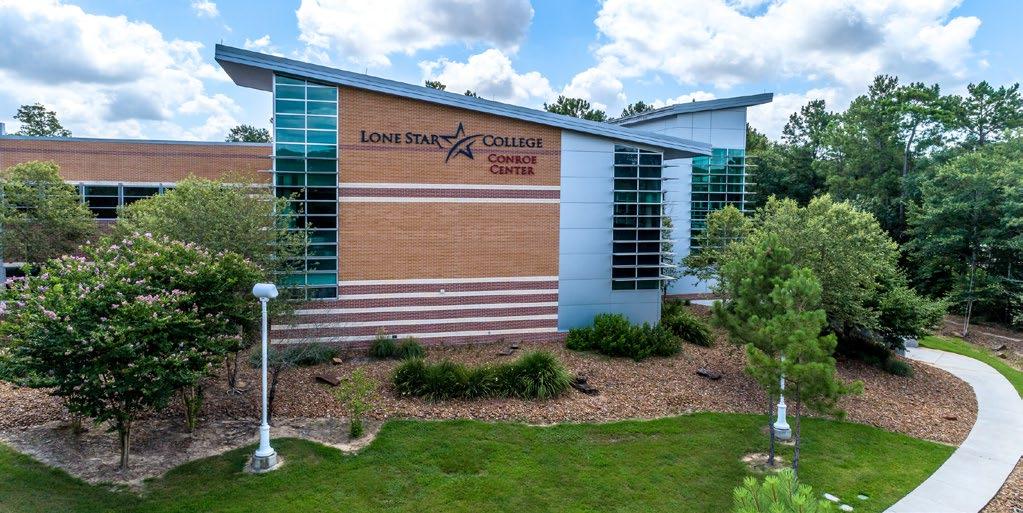



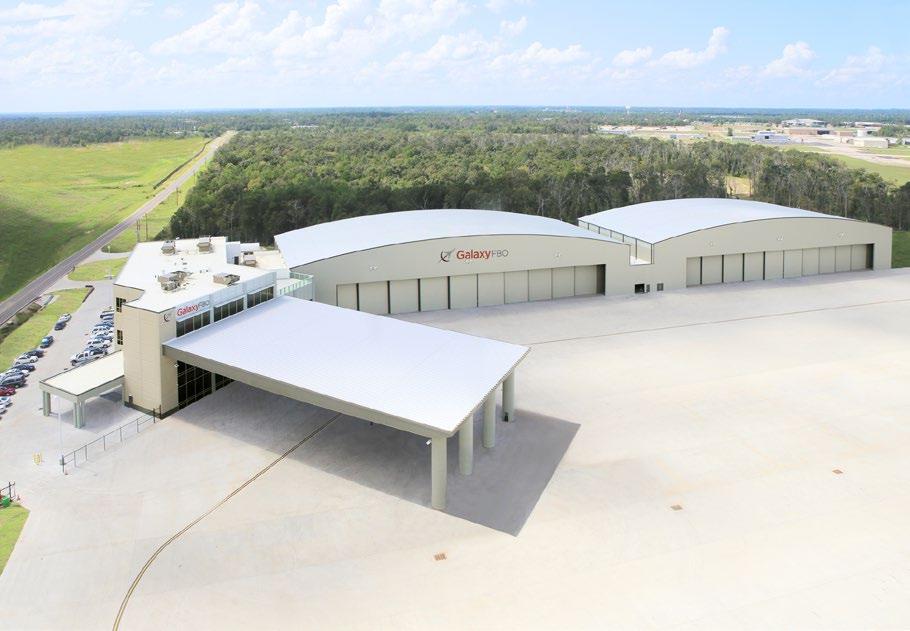



easy to see why so many view Conroe, Texas as a destination of choice due to its ease of access to land, labor, logistics and infrastructure.
It was certainly easy for Galdisa USA to recognize Conroe’s quality. The company manufactures peanut products for industrial, wholesale and retail markets in the United States and houses its headquarters in Conroe. Founded in Mexico in 1957, Galdisa opted to build its first United States plant in Conroe –one of our nation’s fastest-growing cities. Less than a decade after the facility’s grand opening in 2018, the company is already doubling its production capacity by recently breaking ground on a $15 million expansion of its peanut ingredient processing plant.
“We've had the support of the city of Conroe since the beginning,” Victor Galindo Jr., CEO of the Galdisa Group, described. “They helped us to find the best place to build our plant and were very open to our expansion. We put our faith in doing things here in Conroe and it has turned out well.”
Galdisa USA is one of more than 40 companies who call the 1,655-acre Conroe Park North industrial park home. Located two miles east of Interstate-45, the park’s corporate campus atmosphere serves 3,000 local employees but reaches far more through its convenient location. Conroe Park North is nestled 40 minutes from George Bush Intercontinental Airport and just 50 miles from Port Houston – the busiest port in the United States and one of the most vital industrial and logistics hubs in the world.
Less than two miles from Conroe Park North, Deison Technology Park caters to businesses dually passionate about a healthy bottom line and being healthy in body and mind. The park showcases a modern, eco-friendly setup featuring central green space, elevated wooden paths, hiking and biking trails and peaceful gathering areas. To support biomedical research clients developing DNA vaccines, immunotherapies, cell therapies, and gene therapies, VGXI, Inc. (VGXI) became the technology park’s first tenant when it opened its new headquarters in 2022.
“A city’s heartbeat is not just its people or its buildings, but the relentless rhythm of its industry that drives a city forward,” Conroe Mayor Duke Coon said. “We have the infrastructure and workforce to meet your company’s needs, so on behalf of myself and City Council: We welcome you to visit and explore the opportunities ‘The Miracle City’ has to offer.”
Companies pinpoint Conroe as a place to go and grow because the city boasts a qualified workforce. 725 job seekers, a new record for the annual event, attended the 2025 Conroe Job Fair presented by the Conroe Economic Development Council (Conroe EDC) and Conroe/Lake Conroe Chamber.
"We have a viable, trained workforce,” Brian Adams of Airgas, who has participated in Conroe’s Job Fair and Youth to Career Fair on multiple occasions, noted. “Come to Conroe. We're here for you. This is not just a great place to start a business, but we
have the people to work once you get it started."
“Our infrastructure and ideal location are often what initially attract businesses to Conroe,” Assistant Director of Economic Development Laura Lea Palmer shared. “But once people realize how business-friendly we are and see the many ways Conroe can support their families and employees, they’re convinced Conroe is the place for their business to thrive.”
A job-ready workforce to serve a diverse range of industries in a prime location of Texas are among the reasons it’s not hard to see why Conroe is the easy choice for businesses to boom.
Ardmore, Oklahoma, has positioned itself as a focal point for economic growth, drawing in significant investments and attracting diverse industries to the region. Spearheading the transformation is the Ardmore Industrial Airpark, which has garnered over $50 million in infrastructure investments that will expand operational capacity.
Dot Foods, a long-time Ardmore employer, recently completed an expansion which includes the addition of a state-of-the-art refrigerated warehouse. This facility supports Dot Foods' logistics and distribution of perishable goods, bolstering local employment. Dot Foods' presence is a catalyst for additional job creation and economic activity, aligning with Ardmore’s strategy to diversify its industrial base.
Ardmore is also making strides in sustainability and environmental stewardship. Circulus, a plastic recycling company, has experienced significant growth and recently drew major attention with its acquisition by Dow Chemical. This acquisition underscores the company’s value in the recycling sector and Ardmore’s role in fostering cutting-edge sustainability efforts. Circulus’ operations are set to expand further, making Ardmore a significant hub in the plastics recycling industry, aligning with global efforts to reduce plastic waste.
In another groundbreaking project, Woodside Energy has chosen Ardmore as the location for H2OK, a green hydrogen production facility, with a projected investment of nearly $1 billion. H2OK builds on Ardmore’s traditional energy roots, thrusting the community into its next chapter with renewable energy and environmental innovation. With a final investment decision expected in late 2025, the Woodside project has the potential to place Ardmore at the forefront of green energy initiatives in the U.S., setting a precedent for other regions to follow.
As Ardmore continues to attract new industries, it also faces transitions within its traditional industrial sector. Michelin, a longstanding presence in the community, will wind down its tire production in Ardmore by the end of 2025. Although this transition marks the end of an era, it presents an opportunity for economic diversification and growth. Michelin’s exit will

Ardmore, Oklahoma is ideally situated between 2 major metropolitan areas – Dallas and Oklahoma City on Interstate 35. Our location makes Ardmore the logical choice for logistics, energy, and manufacturing.

Low construction costs, utility rates, overhead, and taxes make the cost of doing business in Ardmore significantly less than most of the nation.
When you get more and save more, you earn more. New and expanding companies often tell us that locating in Ardmore, Oklahoma was one of their best business decisions.
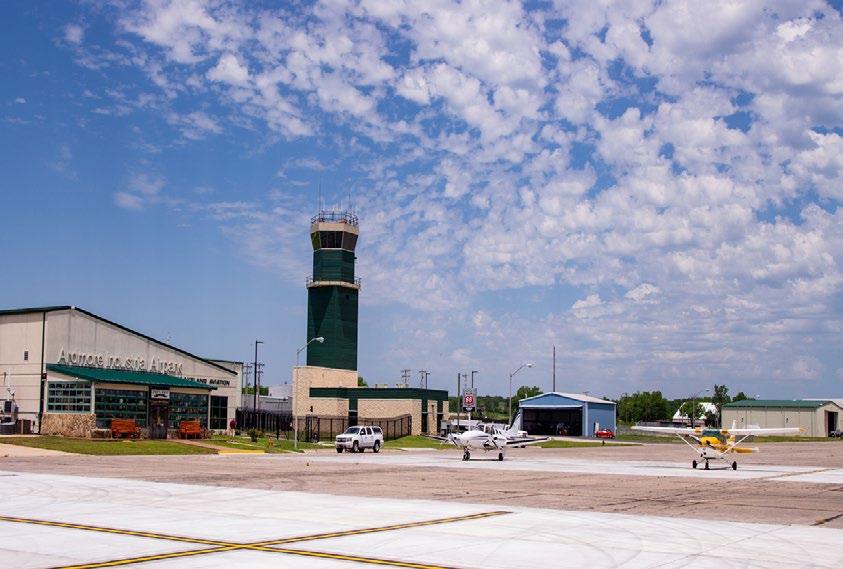
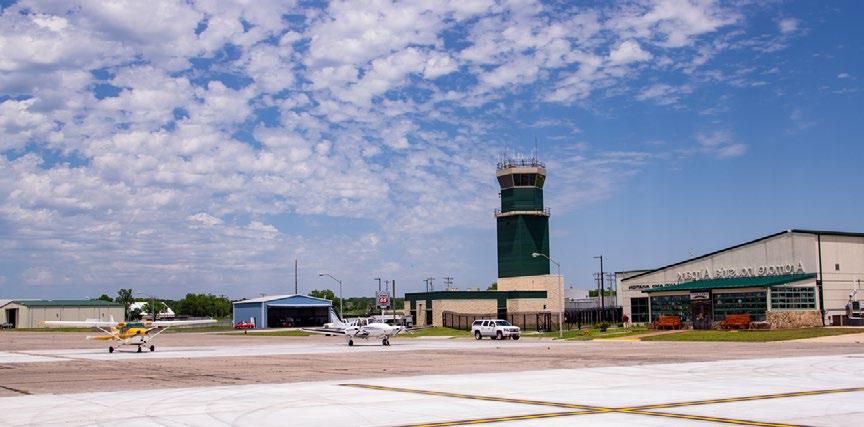
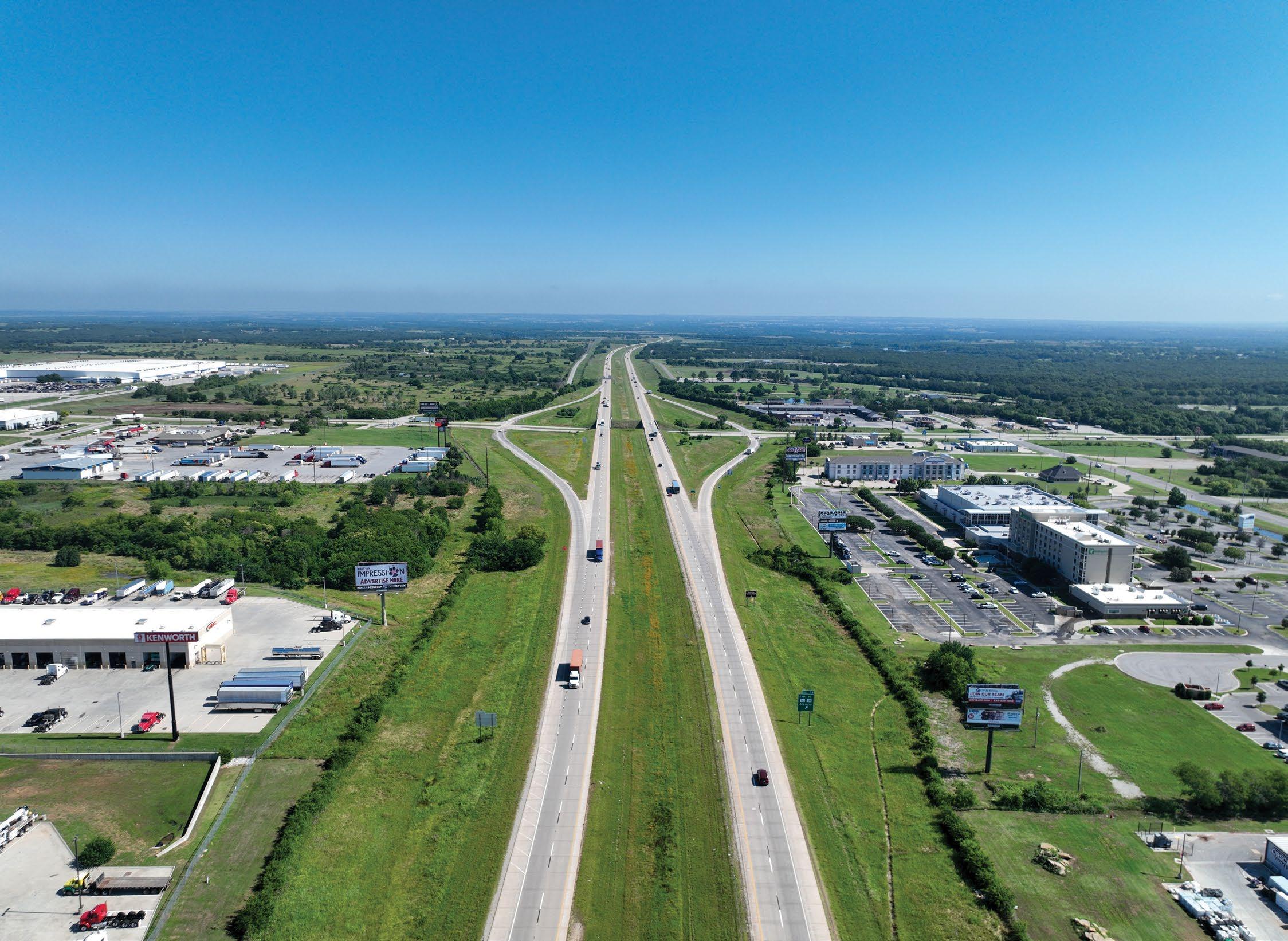
The Ardmore Development Authority owns three industrial parks and several single sites and buildings, giving our organization both the power and incentive to negotiate favorable terms for expanding companies. When combined with Oklahoma’s state incentives, you’ll simply get more in Ardmore.
release a skilled workforce into the labor market, providing a well-trained talent pool for new and expanding industries. Additionally, the wind down will allow the company to find a new user for the 750,000-square-foot warehouse, potentially accommodating new businesses that can capitalize on Ardmore’s strategic location and workforce.
Ardmore’s growth is further supported by the continued northward expansion of the Dallas-Fort Worth Metroplex, which increasingly brings businesses and residents closer to the region. Ardmore’s proximity to this booming metro area enhances its appeal as a site for logistics, distribution, and industry, positioning it as a vital midpoint for businesses looking to bridge operations between Texas and the broader Midwest. This geographic advantage, combined with Ardmore’s strategic investments in infrastructure, sustainability, and workforce readiness, sets the stage for sustained economic development in the coming years.
Ardmore’s economic development efforts exemplify a comprehensive approach to growth, balancing traditional industry support with an eye toward innovation and sustainability. With significant investments in infrastructure, promising projects in green hydrogen and recycling, and the adaptability shown in the Michelin transition, Ardmore is on a path to becoming a robust, diverse economic hub.
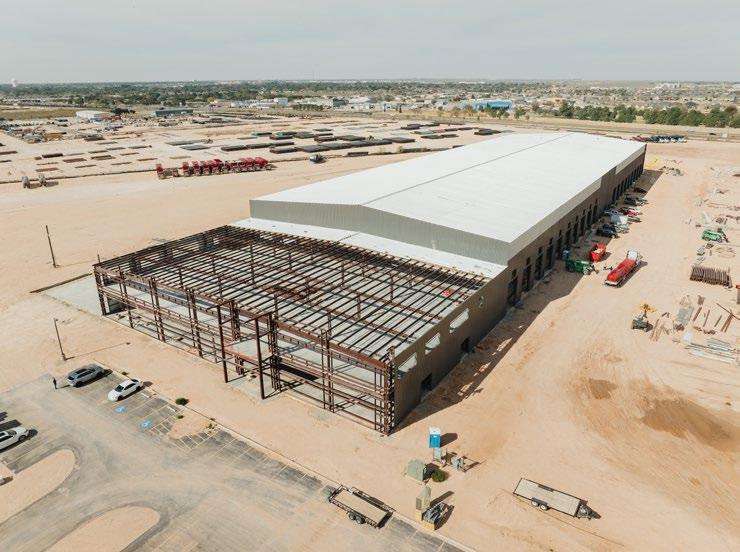
Today’s manufacturing companies will thrive in a location that allows them to adapt to an ever-changing economic environment quickly and efficiently. Odessa, Texas, offers a springboard to success through its wealth of advanced manufacturing potential!
From its position in the Permian Basin, Odessa has built an exceptional historical record in energy production, resulting in a workforce possessing exceptional manufacturing talents. With
the city experiencing growth in numerous adjacent industries, Odessa is the place to be for enterprises ready to launch, scale, or relocate operations.
"Odessa has more machine shop experience than other communities,” said Mark Merritt, Westech Seal CEO. “A lot of precision machining occurs here, including repairing, installing, and rotating equipment and pumps. It is all here.”
Security is a top priority for advanced manufacturing firms, as many apply rapidly developing cutting-edge technology. Odessa’s location in West Texas provides a measure of geographic isolation to protect intellectual property from competitors. Odessa and the surrounding cities also offer a diverse, built-in customer base for a wide range of product offerings. Enterprises choosing Odessa will benefit from streamlining regional supply chains and meeting the demands of existing industries.
Companies located in Odessa maintain a strong connection to major markets through robust transportation infrastructure. Major rail and interstate arteries exist to provide fast delivery to other major markets in Texas and across the United States. Companies onshoring as a protection against potential tariffs will appreciate Odessa’s easy access to markets in Mexico while providing a U.S. site for production and distribution. With over $4.5 billion in ongoing investments in local infrastructure, the city is poised to meet current and future demands. The international airport also offers essential air services for express shipping or international market needs.
Companies ready to optimize operations or enter new markets will discover an eager workforce in Odessa supported
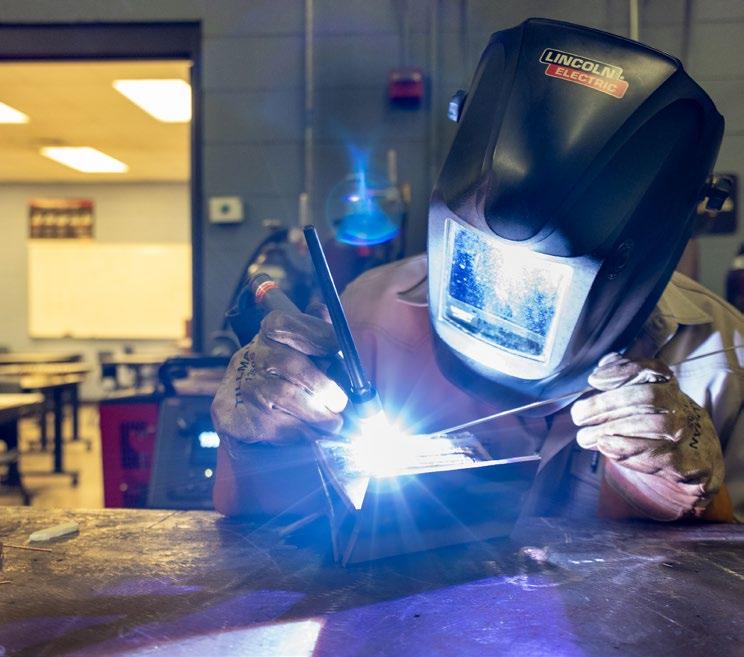
by high-quality colleges and universities. Firms requiring expertise in rapidly advancing technologies, such as robotics, 3D printing, and AI assistance, find these higher education institutions eager to partner on curriculum to support their emerging needs.
Manufacturers in Odessa also have access to a constant supply of oil, gas, and petroleum products while also benefitting from the massive growth in renewable energy.
“Odessa is a business-friendly city with 24/7 manufacturing support. Odessa is ready to recruit new and relocating businesses in advanced manufacturing, medical manufacturing, renewable energy, data centers and construction,” said Tom Manskey, Director of the Odessa Chamber of Commerce Economic Development Department.
Plentiful economic development incentives are available from the Odessa Development Corporation. Job creation and capital investment grants can be stacked with other incentives to fund land, buildings, equipment, facilities expenditures and more for expanding businesses and relocating manufacturers. Existing industrial buildings and shovelready commercial lots meet the needs of small businesses and large enterprises.
An enviable combination of advantages has primed Odessa for manufacturing success. Learn more about how your manufacturing operation can benefit from relocation or expansion in Odessa, and contact Odessa Development Corporation today.
To posture for future growth, the City of Clyde embraces the crosscutting concepts of creating quality places and experiences, foreseeing demands for land use, infrastructure investment, advanced technology and innovation, and connecting human capital with jobs. The City of Clyde is experiencing steady growth in population, business development, and economic opportunity.
To create quality experiences, the City of Clyde has reduced the administrative burdens of bureaucracy, which facilitates a healthy business environment that aligns business-friendly initiatives that support regional economic growth.
To continue that forward growth trend and stay true to the motto, "Small City, Big Opportunities," the City of Clyde has invested heavily in upgrading and modernizing its infrastructure to
safeguard public utilities, improve service delivery, and prepare for future growth. The forward-thinking projects have replaced all commercial and residential water meters with new smart' water meters connected to Advanced Metering Infrastructure (AMI), improving operational efficiency. Additionally, the City of Clyde has upgraded its water treatment facility by doubling daily water production, installing state-of-the-art
You might know about our natural resources, but did you know Odessa, Texas, is rich in human resources? We put a huge emphasis on advanced education and technical training. So when you locate your organization here, a strong skilled workforce is ready to energize your business. ONLY ODESSA
only-odessa.com



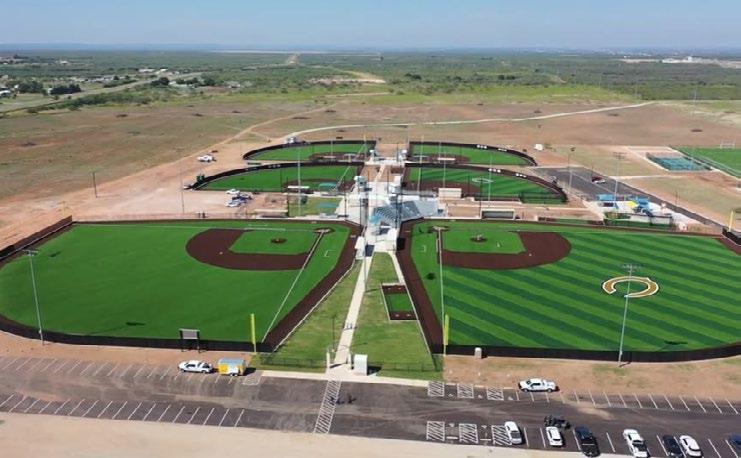
membrane filtration systems, extensively replacing water and sewer lines, and constructing solar arrays to power water and wastewater treatment plants. Most importantly, the City of Clyde has undertaken these improvement initiatives through an Energy Savings Performance Contract (ESPC), enabled by Texas local Government Code 302, which allows cities to pay for efficiency improvements within their existing budget without raising taxes. Savings are generated from installing new, modern, and energy-efficient technology and equipment upgrades.
Beyond traditional infrastructure upgrades, the City of Clyde has also invested in quality-of-life initiatives that include sidewalk replacements for a downtown business district revitalization, splash pod construction, playground upgrades, and a $15 Million Youth Sports Complex project that contains three championship softball fields, two championship baseball
fields, little league field, multi-purpose soccer field, four tennis courts, four pickleball courts, two sand volleyball courts, children's playground, splash pad, and batting cages.
In an increasingly competitive and technology -based economy connecting talent to industry is paramount. Clyde and the region are uniquely positioned to support developing and fast-growing sectors such as clean energy, aerospace, aviation, and advanced manufacturing. The regional labor shed is 140,000, and within 10 miles of Clyde are four universities, a community college, and a technical college. The local school districts have added career and technical programs and technology, science, engineering, and math programs. The region also has a large veteran community with diverse skill sets. Clyde works with the Texas Workforce Commission and Workforce Solutions of West Central Texas to strengthen the economic vitality in their 19-county region by investing in the success of residents and businesses.
At the high school level, the City of Clyde has partnered with the Clyde Consolidated Independent School District to support The Youth Success Program, which connects with rural high schools to provide career-minded one-on-one advising for all seniors (no eligibility required) to increase enrollment in postsecondary education and training including, but not limited to, universities, technical schools, apprenticeships, and the military. Youth Success Advisors explore career pathways, determine the best fit for postsecondary education and training, identify and eliminate barriers, and assist students with enrolling in postsecondary education. A Youth Success Advisor is embedded at Clyde High School, meeting with students and collaborating with counselors and teachers on how to best support the students on their journey to a successful career. Through the Youth Success Program, students can participate in job shadowing experiences, industry tours, and internships to connect students with local career opportunities.
Students also have access to emergency financial aid to assist with application fees, deposits, and other financial needs related to enrolling in and attending postsecondary education and training. Advisors continue to support students through the first year of postsecondary education and training to increase the likelihood of persistence and completion of their degrees or certifications.
The City of Clyde's location along 1-20 in Central West Texas provides direct access lo the southern United States and Mexico. With their location directly on 1-20, Clyde offers eastbound 1-20 access to Dallas/Fort Worth and a westbound connection to 1-10 and El Paso. Additionally, Clyde is located near U.S Highways 83, 84, 277, 36, and 18, allowing for coast-to-coast travel. The Abilene Regional Airport services Clyde and offers daily express flights to Dallas and Fort Worth, serviced by American Airlines, serving over 90,000 passengers annually. Dallas Fort Worth International has 49 international and 137 domestic connections
to markets for companies making foreign direct investments in Clyde. So when deciding on future locations for economic development, the City of Clyde and the West Central region of Texas are ready to meet the unique needs of businesses and industry.
The city of Hamilton, Texas is conveniently located at the intersection of US Highway 281 and Texas State Highway 36. Seated along the Edwards Plateau, where the hill country embraces the grassy plains.
Hamilton is centrally located, only 100 miles north of Austin, south of Dallas/Fort Worth and east of Abilene. Close proximity to these metro areas ensures a consistent flow of recreational, industrial, agricultural, and commercial traffic, as travelers venture from one part of the state to another. Enticed to stop for unique shopping and dining opportunities, Hamilton has changed from a stop-along-the-way to a hill country destination.
In addition to direct highway access, the Hamilton Municipal Airport is the largest in the region, supporting private jets, providing self-service fuel and a courtesy car available 24-hours a day. Most weekends, you can find gliders leaving the airport, so pilots, students and guests can take in the beautiful hill country scenery from an alternative perspective.
Hamilton is the county seat, allowing the historically preserved and updated Hamilton County Courthouse to provide governmental services daily to a population of 8,000. The courthouse is the center of our downtown, supplying the perfect location to numerous community events and festivals.
The Texas Historical Commission designated the 18-county area of Central Texas as the Texas Brazos Trail Region. Hamilton is featured on the trail because
of its rich architectural history. Many of the buildings downtown feature their original limestone facades and a rare bowstring iron bridge leads pedestrians to a local nature trail for walking and running. The beautiful and spacious Pecan Creek Park spreads across numerous acres, providing baseball, softball, playgrounds, and disc golf. City Lake provides water-based recreation for kayaking, paddleboarding, fishing and much more.
Hamilton is known as the “Dove Capital of Texas”, which is a strong statement. Extensive wildlife such as turkeys, doves, whitetail deer and more, are just a few additional reasons why individuals visit Hamilton. Those that prefer photography keep busy all year round with breathtaking fields of bluebonnets, endless sunflowers, world record longhorns, and exquisite sunsets.
The Circle T Resort provides a comfortable western inn for overnight stays, stall and RV reservations, awardwinning steakhouse, and monthly opportunities to participate in youth and adult rodeos, including the World Series of Team Roping.
Just outside the city limits, is a 200-acre complex that is home to the Game Warden Training Center for Texas Parks and Wildlife. The facility provides the only training available to become a Game Warden or Park Police Officer. Every year, a new class of cadets graduate and join an elite group of trained conservation officers stationed throughout the state.
The Texas Historical Commission designated Hamilton as an official Texas Main Street community in 2020. To ensure clear communication, streamlined processes and project efficiency, the Economic Development Corporation and Main Street Program are housed in the same building. Both entities focus on community engagement, economic growth and development, historical preservation, and building a talented local workforce. X


You often hear you can't have it all, but in Pennsylvania, you'll start believing you can. Here you'll find an experienced and skilled workforce, best-in-class higher education institutions ready to partner with industry, a prime East Coast location, and exceptional quality of life. Innovation and ingenuity are woven into their flag and serve as the foundation for their population's legendary spirit.
.........................................................................................
Their past, present, and future are tied together with inventors and entrepreneurs committed to the commonwealth of Pennsylvania. From corporate headquarters to state-of-the-art R&D facilities, to startups and small businesses, their business environment empowers companies to be revolutionaries in their industry and redefine success. They are the most economically diverse state in the country. Their $915 billion GDP makes them the sixth largest economy in the U.S. and a leading global economic hub. From corporate headquarters (they're home to 24 Fortune 500 companies), to state-of-the-art R&D facilities, to startups and more than one million small businesses, their business environment empowers companies to be revolutionaries in their industry and redefine success. And their business-friendly tax climate is gradually reducing the corporate net income tax rate to 4.99 percent by 2031, making it among the lowest in the nation.
Pennsylvanians have a full and vibrant life here thanks to factors like economic opportunity, affordable housing and first-rate healthcare, as well as exceptional schools, endless opportunity for outdoor adventure, and cultural attractions. Their rich history, stunning landscapes, and growing cities represent something for everyone looking to live outside the 9-5.
From opening the first university in the US to revolutionizing their country's procurement of energy, creativity and ingenuity is in their DNA. They’ve been innovating for hundreds of years, and that spirit has led not only to a strong economy, but the most diverse economy in the country. That diversity is reflected in the many industries that shine in the Keystone State. Key industries have strategically emerged as the stronghold in PA thanks to business leaders and academics, as well as a historical emphasis on maintaining their strength in these industries. Founding the nation's first hospital makes way for the next big biopharma break, and the invention of the lightning rod sparked an energy-evolution still powering their economy today. And while some of our industries have rich historical ties, they are proud to be at the forefront of new and evolving industries-like robotics and technology-just as they were at the forefront of academia and business operations.
Advanced Manufacturing is part of Pennsylvania’s larger manufacturing environment which has always been the backbone of their economy. Manufacturing has an economic impact of more

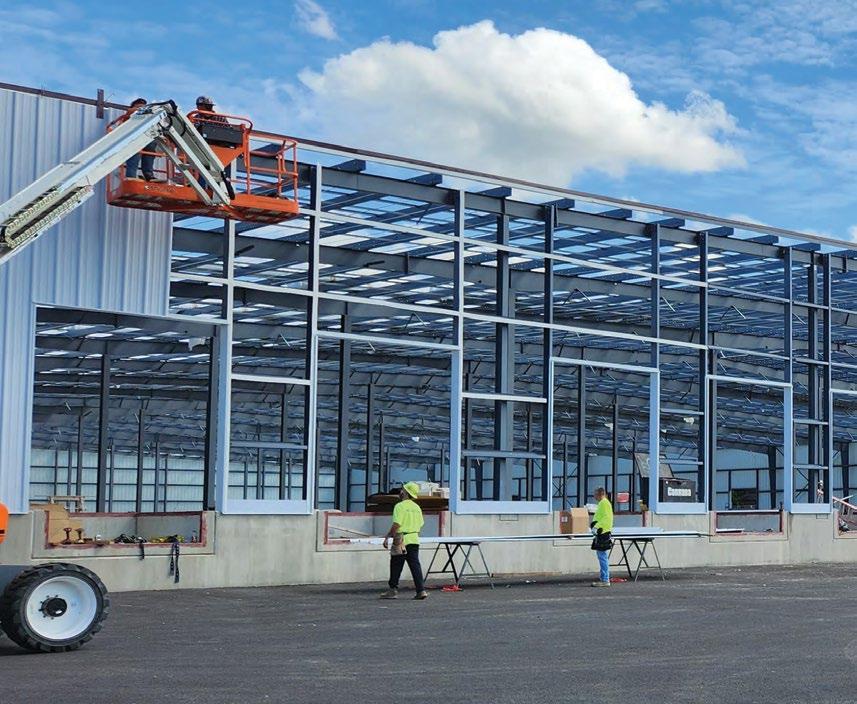

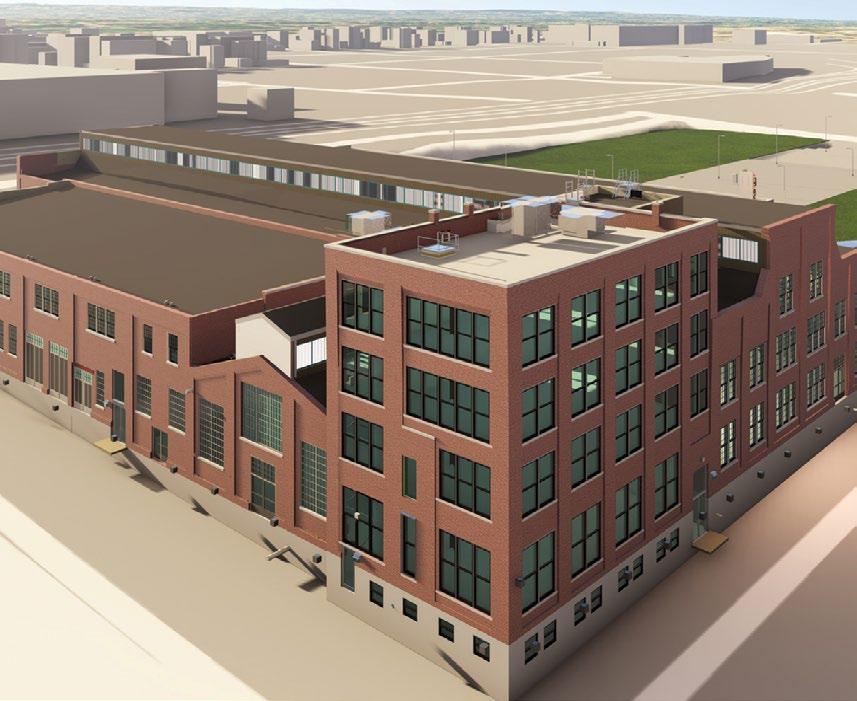


than $116 billion and accounts for more than 10% of all jobs in Pennsylvania with over 566,800 residents employed in the industry. Their expanding R&D facilities, growing technical and industrial resources, and leading STEM innovators have created a unique and thriving manufacturing industry that is meeting the needs of businesses and consumers.
Agribusiness, food, and beverage production industry supports 140,000 jobs and $38.3 billon in output. The success of their food and beverage industry has enabled downstream operations to flourish. Two aluminum canning companies, Ball Corporation and CANPACK, as well as food packaging manufacturer Cardbox Packaging recently located to Pennsylvania due in part to the opportunities presented by their food and beverage manufacturing sector.
Pennsylvania’s abundant and diverse energy portfolio is one of their greatest strengths. Whether you’re an energy company looking to utilize their plentiful reserves of natural gas for energy production or a manufacturing company with extensive energy-intensive processes, Pennsylvania can meet your needs.
“Location, location, location” is a common refrain for the logistics and distribution sector, and in Pennsylvania, their strategic location is one of their greatest strengths. The commonwealth is located within a day’s drive of nearly 40 percent of the United States population and 60 percent of the Canadian population and purchasing power, including four of the 10 largest markets in the United States. And reaching these customers and markets is easy and convenient because of Pennsylvania’s comprehensive transportation network.
From medical research and laboratory testing to pharmaceutical and medical device manufacturing, Pennsylvania has become an epicenter for life sciences companies. Their nearly $50 billion life sciences ecosystem is driven by world-class R&D institutions, topnotch universities and incubators, technical assistance, and strategic investments in venture capital, technology, and infrastructure. In fact, Pennsylvania is among the top states in key measures of bioscience R&D and innovation, including academic R&D, NIH research funding, venture capital investments, and patenting.
Major players in the technology sector view Robotics & AI as synonymous with Pennsylvania. Their world-class R&D institutions like Carnegie Mellon University – combined with an environment rich in venture capital and private equity opportunities, a robust entrepreneurial ecosystem, an affordable cost of living, and a vibrant culture – make Pennsylvania the best choice for new or existing robotics and AI companies.
From medical devices to construction to aerospace and beyond, innovations in the plastics industry have caused demand for plastic to continue to grow. Their natural gas reserves - producing the secondlargest amount of natural gas in the country - enables the low-cost production of polyethylene, making the commonwealth the natural choice for food packaging companies, automotive component companies, and more.
For more information, please contact the Pennsylvania Department of Community & Economic Development at 866-466-3972 or visit their website at www.dced.pa.gov
Among the many property development opportunities currently underway in Erie, Pennsylvania — and there are many — one in particular has been drawing a lot of attention. And for good reason.
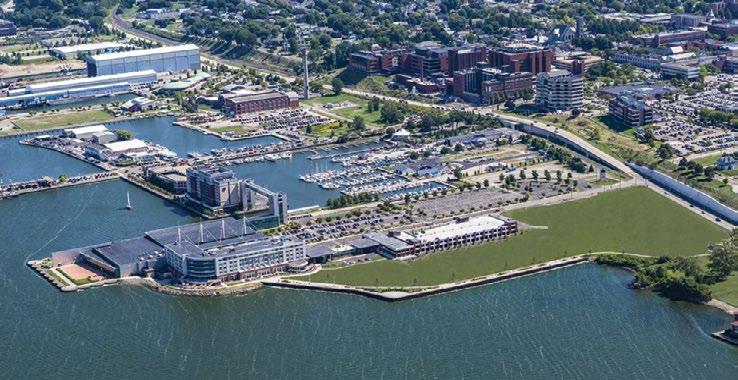
Business Park: Today’s Answer to Tomorrow’s Demands
McKean Business Park is a 160-acre development project that’s primed and ready for business. From its conception, the project set out to deliver unique amenities combined with adaptable scalability to accommodate growth and future demands.
In an era where both data and power have become increasingly critical — particularly with the rise of AI and other energy-intensive technologies — McKean Business Park has answered that call with integrated fiber optics and an on-site power grid with transmission lines ready to deliver maximum load. This makes it an ideal location for businesses with considerable power requirements, like manufacturing facilities, data and distribution centers or technology companies.
The site is also primed with substantial water and sewer capacities, with 150,000 gallons per day (GPD) of sewer throughput and 2,500 gallons per minute (GPM) of water supply at 95 psi.

Erie’s location on the south shores of Lake Erie not only contributes to the ample water supply, but also provides access to major shipping routes — water, rail and interstate. Situated conveniently alongside Interstate 90 — a major east/west shipping artery — McKean Business Park is located within a day’s haul of 50% of the nation’s population.
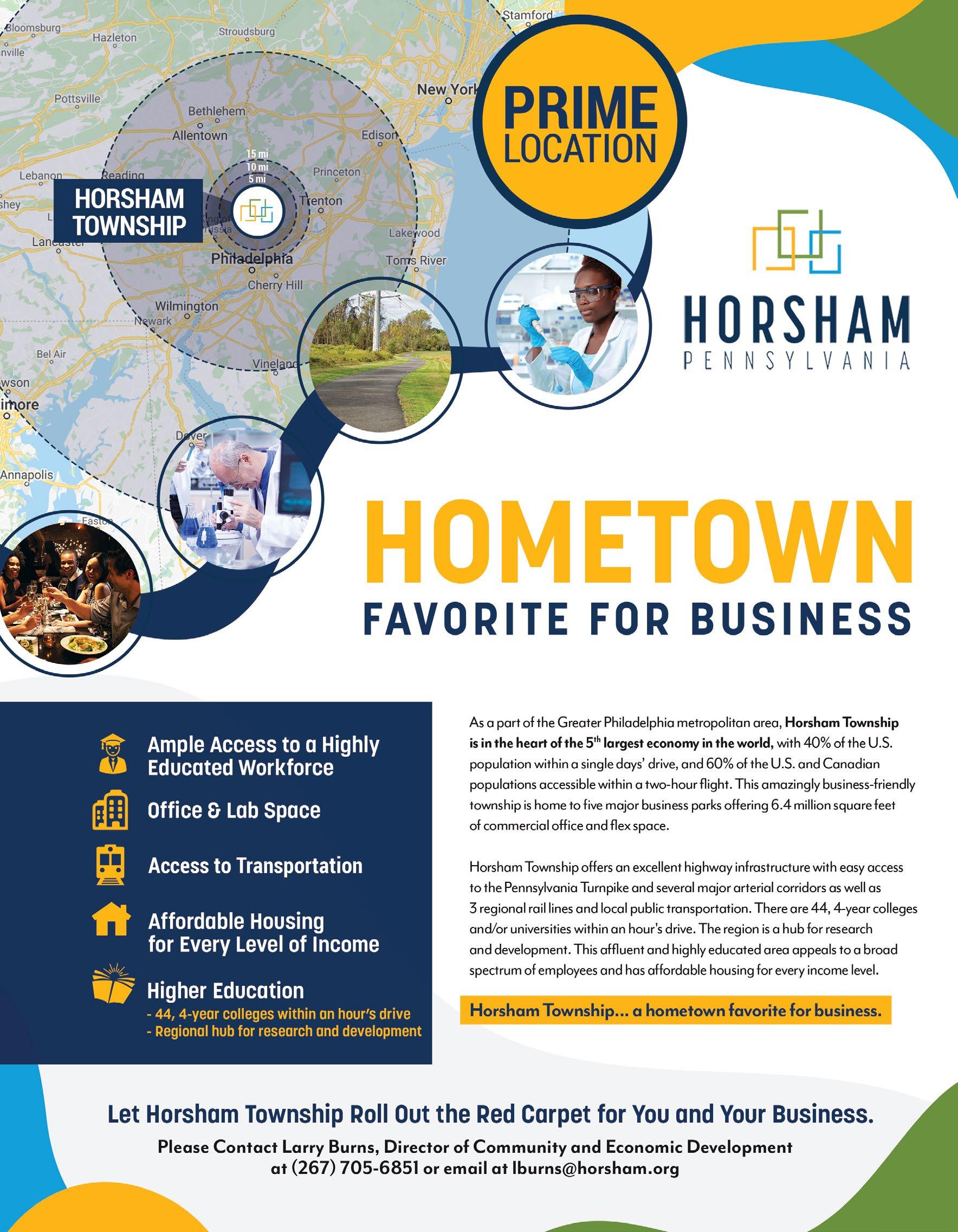
Since the infrastructure, zoning and permitting are already in place at McKean Business Park, this eliminates many of the uncertainties and issues that can frequently accompany and slow down site development projects.
This translates into a significant reduction in time and effort, allowing companies to go from concept to development to operation quickly.
With its abundance of educational resources — including universities, colleges and job training and development programs — Erie delivers an extremely diverse and skilled workforce pipeline.
And in this region, the cost of living is low. For many companies, this typically translates into lower operating costs in terms of real estate, wages, utilities and more. Which, in turn, can equate to increased opportunities for growth, reinvestment and expansion.
Erie is currently experiencing a renaissance, fueled by an influx of investment and redevelopment dollars. Just within the last decade, more than $1 billion has been invested into this region.
The Erie County Redevelopment Authority (ECRDA) does much of the heavy lifting when it comes to site development and securing and building out the infrastructure to support that development throughout northwest Pennsylvania.
But the authority also plays a pivotal role in assisting businesses with financing and support services that are crucial for success. By working in close collaboration with local, state, national and private entities, they help businesses secure the necessary funding and resources to bring their projects to fruition.
In addition to financial support, ECRDA facilitates the often complex process of obtaining state and local permits, ensuring that businesses can navigate regulatory requirements with ease.
According to Tina Mengine, the organization’s CEO, “We also offer guidance on leveraging various incentives designed to spur economic growth and development. This comprehensive support system makes us a one-stop-shop for businesses — streamlining the process to deliver projects on time, on budget and with minimal hassle.”
With its robust infrastructure, prime location, and supportive business environment, McKean Business Park presents a compelling opportunity for businesses looking to thrive in the 21st century. And it’s an opportunity that’s become a topic of discussion throughout the industry.
As part of the Greater Philadelphia metropolitan area, Horsham Township is in the heart of the 5th largest economy in the world, with 40% of the U.S. population within a single days’ drive, and 60%
of the U.S. and Canadian populations accessible via a two-hour flight.
Horsham Township is accessible to nine major airports within a two-hour drive, and to three corporate service airports within 15 miles. Philadelphia International Airport is just 35 miles away and about a 42-minute car ride from Horsham. The township is easily accessible to Center City Philadelphia and to the Port of Philadelphia.
This amazingly business-friendly township is home to five major business parks offering 6.4 million square feet of commercial office and flex space. Additional capacity is anticipated with planned redevelopment of the 862-acre former NAS-JRB Willow Grove military base. Highlights of their business environment include: Among the lowest real estate taxes in the region; no business privilege tax; no mercantile tax; and rental rates per square foot highly competitive with regional rates.
Horsham and greater Montgomery County are home to healthcare leaders, telecommunication and information companies, financial centers and tech companies. The township offers an excellent highway infrastructure with easy access to the Pennsylvania Turnpike and several major arterial corridors as well as three regional rail lines and local public transportation.
Employers and their workforce appreciate the number of nearby amenities, services and attractions. Scores of local and regional restaurants offer wonderful diversity for the discerning palate. The township is close to a wealth of craft breweries, wineries and local distilleries for sipping and sampling. Additional attractions include: numerous regional retail shopping venues; Museums, casinos and a wealth of must-see historical landmarks; natural appeal with 860 parks, trails and open space; short drive to New Jersey and Delaware’s beaches and boardwalks as well as the ski slopes and lakes of Pennsylvania’s Pocono Mountains.
The School District of Hatboro-Horsham affords a rich history of academic excellence. All schools have received Blue Ribbon honors from both the state and federal Departments of Education. The district has ranked in the top 15% of Pennsylvania schools and in the top 10% of all schools in the nation. In terms of higher education, 44 colleges and/or research universities provide higher education within about an hour’s drive.
As a crossroads for wide-open opportunities that attract new business, economic development and commerce, Horsham is ideally situated for companies seeking easy accessibility, connectivity and the perfect environment for growth.
Horsham Township truly is A COMMUNITY CONNECTED to their residents, to their business community, and to a very talented workforce. Horsham is a great place to live, work, and play. They welcome and encourage your consideration when weighing favorable locations for your business or business units and when considering your available investment options.
For more information, please contact the Horsham Township Office of Community & Economic Development at 215-643-3131 or check out their Eco/Dev resources at https://www.horsham. org/43036/economic-development
Penn’s Northeast proudly acknowledges role in contributing to this significant achievement.
continue to choose our region as a prime location,” Augustine added. “We continue to experience unprecedented growth, not just in warehouse distribution, but also in manufacturing.”
Augustine further emphasized the region’s future prospects: “With ongoing infrastructure investments, and a strong collaboration between the public and private sectors, Northeastern Pennsylvania is well-positioned to remain a leader in economic development for years to come.”

For the fifth consecutive year, Northeastern Pennsylvania has been recognized as one of the top locations in the United States for economic development projects.
The prestigious Governor’s Cup Awards, produced annually by Site Selection Magazine, ranks the top regions in the United States based on completed economic development projects. The ranking highlights the region’s continued success in attracting and expanding businesses.
Penn’s Northeast, the regional economic development agency, played a key role in compiling and submitting a comprehensive list of qualifying projects that contributed to this recognition. This year, the region ranked in the Top 10 for both the number of projects and projects per capita.
“This is a competitive process that takes place across the country every year,” said John L. Augustine III, President/ CEO of Penn’s Northeast. “Northeastern PA continues to be a region of choice for top companies and developers. There's no question our location continues to be one of the strongest selling points. You can reach one-third of the United States and half of Canada in a one-days drive from Northeastern Pennsylvania.
Companies continue to recognize this advantage as they need to get their products to market and consumers as quickly as possible.”
“In addition to our strategic location, reliable utilities, and dedicated workforce, our amazing education network makes Northeastern Pennsylvania a top-tier destination for business growth. The results show that companies looking to expand
Site Selection Magazine, produced by Conway Data, is a bi-monthly publication recognized as the leading source for corporate real estate, facility planning, location analysis, and foreign direct investment. The Governor’s Cup Awards are highly regarded within the industry and serve as a benchmark for regional economic success.
Penn's Northeast is a public-private partnership dedicated to attracting quality employers to Northeastern Pennsylvania and strengthening the regional economy through new investments and job creation.
For more information about Penn’s Northeast, visit www.pennsnortheast.com or call 1.800.317.1313.. X



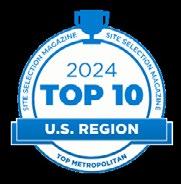

Tennessee believes in high expectations, low debt, and a pro-business regulatory environment. Tennessee is proud to be a right-to-work state with no personal income tax. Their state and local tax burdens are among the lowest in the country and their state budget operates with a healthy surplus rather than a deficit.
In Tennessee, they make world-class cars, guns, and guitars. They make batteries, refrigerators, savory snacks, and legendary whiskey. “Made in Tennessee” means something special in the global business community. They’re recognized around the world for the high quality or their craftsmanship and the artisan strength of their workforce. Some of the biggest and most respected brands in the world have chosen to call Tennessee home. That’s why they make the world’s best whiskey, Duracell batteries, GE refrigerators, and La-Z-Boy recliners. They are home to the largest ice cream plant in the world

and make the M&Ms to put on the kids’ ice cream sundaes.
Tennessee makes cars for Nissan, General Motors, and Volkswagen and car parts for Bridgestone, Hankook, and Denso Manufacturing. Guns are made for Beretta USA and appliances for Whirlpool.
When you bring your business to Tennessee, you’ll have unparalleled access to all markets within the U.S. and across the globe. Tennessee is home to one of the busiest cargo airport in the world, the third largest rail center in the U.S. and the nation’s fifth largest inland port. If you’re up for a day trip, Tennessee is conveniently accessible within a day’s drive to a majority of U.S. markets.
From the foothills of the beautiful Smoky Mountains to the broad banks of the Mississippi, the Volunteer State spans three distinct regions, each with its own personality. Tennessee boasts some of the lowest housing prices in the U.S. and your dollar will stretch further here than almost anywhere else in the country.
Tennessee’s music and arts pedigree is unlike any other. The state is the birthplace of rock ‘n’ roll and country music, the home of the blues and the starting point of soul. Tennessee is also legendary for breathtaking landscapes, from lush forests and crystal-clear rivers to rolling hills and awe-inspiring mountain vistas. People tak advantage of the state’s abundant resources for fishing, hiking, boating, hunting, golfing, cycling, horseback riding, rock climbing and more.
For more information on why you may want to consider having your business in Tennessee, please contact the Tennessee Department of Economic & Community Development at 615-7411888 or visit their website at www.tnedc.com .
Driven by its highly developed logistics infrastructure, the world’s fastest internet speeds, a deep talent pool, and low-cost, reliable utilities, Chattanooga, Tennessee, is quickly becoming a powerhouse for next-generation manufacturing and innovation, attracting major investments and establishing itself

With low costs and reliable, cutting-edge infrastructure, find out why Chattanooga is one of the most desirable locations for businesses in the U.S.

as an unbeatable economic environment where both new and established businesses thrive.
A key player in this transformation is NOVONIX, a producer of synthetic graphite for electric vehicle batteries, which recently announced a $1 billion expansion. Through its groundbreaking, new furnace technology, NOVONIX secured a conditional commitment from the Department of Energy for a direct loan of up to $754.8 million to help finance a synthetic graphite facility in Chattanooga. At full capacity, the new operation will increase the company’s capacity to support the production of lithium-ion batteries for approximately 325,000 electric vehicles each year.
Due to its light weight, high strength, thermal conductivity, and resistance to extreme temperatures, synthetic graphite is also used in aerospace and defense applications. Tennessee is home to over a hundred aerospace and defense companies, employing 10,000 workers and exporting $935 million in aerospace products annually. The region’s strategic location at the intersection of three major interstates (I-75, I-24, I-59) provides easy access to key hubs like Huntsville (NASA Marshall Space Flight Center), Atlanta, and Nashville, and makes Chattanooga a prime destination for aerospace innovation. By expanding its synthetic graphite production for the EV sector, Chattanooga’s new NOVONIX facility can directly support the growing demand for advanced materials in the aerospace and defense sectors.
But NOVONIX is just one example of Chattanooga’s growth in cutting-edge industries. The region has a long history of manufacturing excellence, from its early days as a steel and rail hub to its continued success in automotive, aerospace, and advanced manufacturing.
Global companies like Volkswagen, Amazon, and Google have chosen the area, alongside homegrown businesses such as Coca-Cola Bottling, Unum, BlueCross BlueShield of Tennessee, and Lodge Manufacturing. Since 2008, the region has attracted more than $14 billion in new business investment, fueling a thriving ecosystem of advanced manufacturers, including:
• Volkswagen Chattanooga, the OEM’s only U.S. assembly plant, producing electric and combustion vehicles.
• West Star Aviation, investing $32 million to expand its aircraft maintenance and aerospace manufacturing operations.
• Siemens Energy Services, employing 275 people in the production of electrical components.
• Avail Enclosure Systems, a leading manufacturer of ballisticrated e-houses that secure critical infrastructure, expanding its Chattanooga presence.
• Amaero International, establishing a $54.9 million flagship advanced manufacturing and R&D facility to serve the defense industry.
• Wacker Polysilicon, employing 600 people in polysilicon production for the solar and semiconductor industries.
Business investment is only part of Chattanooga’s story. Surrounded by mountains, rivers, and lakes, the region blends industry with outdoor adventure. Offices in the area are just minutes from mountain biking trails, whitewater, and rock climbing. Recognized as “a manufacturing magnet” by CNBC and “Best Town Ever” by Outdoor Magazine, the region truly offers something for everyone, including free summer concerts, a thriving arts scene, diverse dining, top-tier healthcare, and a range of outdoor adventures.
In uncertain times, Chattanooga is a safe investment. The city’s smart grid – the most advanced in the U.S. – means more up-time, with a self-healing power system that reroutes electricity in seconds. Paired with some of the world’s fastest internet speeds, Chattanooga’s infrastructure offers a level of reliability that few other cities can match. Beyond that, the region’s pro-business attitude, low taxes and right-to-work laws break down barriers that can create unpredictability.
Next-gen manufacturing and innovative companies are thriving in Chattanooga, thanks to its prime location, top-tier talent and reliable infrastructure. This, combined with the area’s affordable cost of living, outdoor recreation, and vibrant cultural scene make the Chattanooga region a top choice for high-growth companies looking to invest, relocate or reshore.
Over 200 years ago, the newly formed Wilson County needed a county seat. When surveyors discovered an artesian spring, they exclaimed, “This is the place!” They could have added another word because Lebanon is a special place. It is a place where people have invested personally and financially.
Lebanon has long been home to a robust business community. From the Lebanon Woolen Mills, which provided blankets for soldiers during World War I, to Cracker Barrel, which has been a stop for countless hungry travelers, their city has been the birthplace of businesses that have impacted the nation and the world. This tradition continues today with small, locally owned businesses thriving alongside large corporations.
If you are opening a new business or searching for a new location for your current business, the City of Lebanon has many assets that make it “The Place.”
Cumberland University is a four-year, fully accredited institution that offers graduate degrees in various fields. It provides a trained workforce for businesses in multiple industries.
The Lebanon Municipal Airport is capable of handling most corporate travel needs.
The Music City Star offers public transportation between downtown Lebanon and downtown Nashville. Your employees have easy access to the Nashville scene. In return, citizens and visitors of Nashville have easy access to the shops and restaurants of Lebanon.

Lebanon also sits at the convergence of several major interstate highways. I-40, which runs from North Carolina to California, passes through their city limits. I-840 goes to I-65, which runs from Alabama to Chicago.
Vanderbilt Hospital, renowned for its excellent medical care, has recently opened a campus in Lebanon.
Thriving Downtown, Lebanon’s Historic Square is the vibrant heart of Lebanon. The area is a bustling spot for shopping, dining, entertainment, tasting local and regional brews, and exploring heritage tourism.
These assets continue to make Lebanon a special place for the people who call it home. They can also make it a special place for you to invest in your business, in your quality of life, and in this community.
Lebanon takes pride in their 200-year history as a thriving business community. However, today there is more opportunity than ever to thrive in Lebanon's business community. This has been the home to hundreds of successful businesses, and it is the ideal location for your business investment.
If you would like to relocate your business or to learn more information about this historic, thriving city, please reach out to Sarah Haston, Economic & Community Development Director, at 615-443-2839 ext. 2122 or visit their website at www.lebanontn.org . X
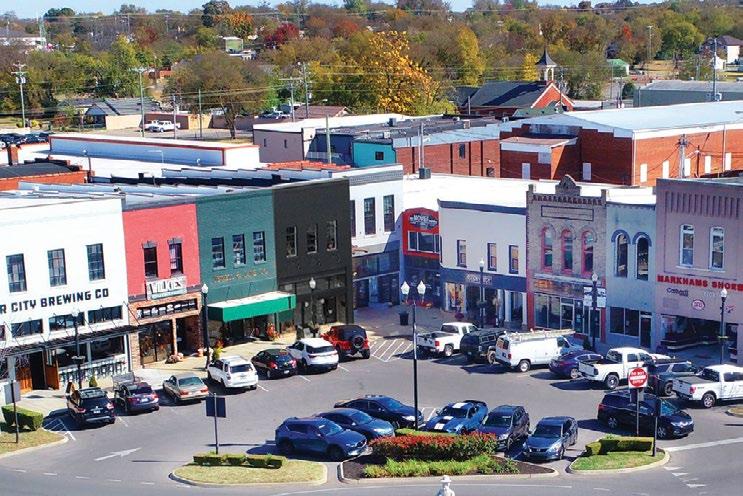



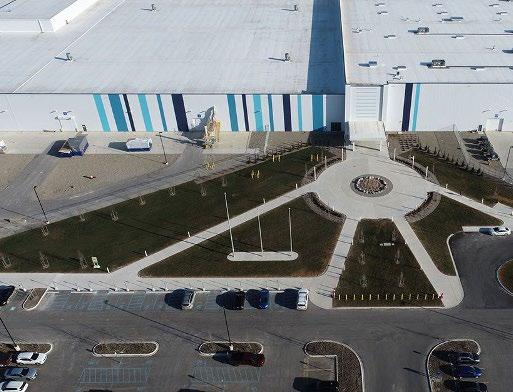
The Michigan Strategic Fund (MSF) approved a series of amendments and program updates that will continue to strengthen Michigan's leadership in startup innovation, small business support and the state’s advanced manufacturing workforce.
“Whether supporting Michigan’s startup ecosystem, capitalizing on federal support for small businesses in our automotive manufacturing sector or ensuring the continued success of a
key battery plant project in Lansing, today’s approved actions and projects by the MSF Board help Team Michigan deliver on the state’s ‘Make It in Michigan’ economic development strategy of supporting People, Places and Projects,” said Quentin L. Messer, Jr., CEO of the Michigan Economic Development Corporation and Chair of the MSF Board. “I’m grateful to Governor Whitmer, our bipartisan partners in the state legislature, and the volunteer MSF Board for their ongoing support and collaboration to deliver solutions and results for businesses and residents in our great state. Work remains, but today’s approvals reflect Team Michigan’s ongoing commitment to innovation and growth within our key industries.”

TheBoardalsoapprovedaseriesof MichiganInnovateCapitalFund(MICF) programupdatesandamendmentstohelp theMEDCcontinuetoprovideessential supporttohigh-techstartupsinthestate.In June2023,theMSFapprovedtheMICF program,whichprovidesawardincentives tononprofitorganizationsthatoperate fundprogramstoinvestinpre-seedand startupstagecompetitiveedge technologiesthatrequirecapitalinthe earlieststagesofthecommercialization process.
Theapprovedmeasuresinclude:
• Anallocationof$5,000,000fromthe JobsforMichiganInvestmentFund totheMICFprogram
• Anamendmenttotheinvestment criteria,allowingMICFInvestment FundManagerstoincreasethe exposurelimitpercompanytoa totalof$500,000
• Anamendmenttothegrant agreementbetweentheMSFand theInvestDetroitFoundationID Venturestofundthecontinuationof investmentsintheformofloansand equityfinancingundertheMICF program
Finally, the Board voted to accept federal funds awarded to the MEDC by U.S. Treasury, which will go towards providing Technical Assistance support to very small businesses and businesses owned and controlled by socially and economically disadvantaged individuals (SEDI).
• The State Small Business Credit Initiative (SSBCI) Investing in America Small Business Opportunity Program (SBOP) awarded the MEDC $9,092,364 to support the Michigan Auto Supplier Transition Program
• The new proposed program will seek to support SEDI-owned suppliers in Michigan's automotive manufacturing sector, with a focus on those impacted by the transition to EVs.
This federal funding will create additionalopportunitiesfortheMEDC SmallBusinessServicesteamto providesmallbusinesssupportand resourcesinthiscriticalsector. Additionalactivitiesaroundthe MichiganAutoSupplierTransition ProgramwillbepresentedtotheMSF Boardatafuturemeeting.
The Board approved amendments to the MSF incentives authorized in January 2022 for the construction of an Ultium
battery manufacturing facility in Lansing, originally a joint venture between GM and LG Energy Solution (LGES). Through the sale of GM’s portion of the battery plant and 100% transfer of state incentives already secured for the facility, LGES will wholly own the facility – ensuring the project stays on track and high-tech jobs and battery manufacturing remain in Michigan.
In committing to the agreement under the original Ultium joint venture, LGES is maintaining at least 1,360 Michigan jobs committed to by the original Ultium joint venture, guaranteeing the future of the Lansing facility and supporting continued job growth in the state.
Reassigning incentives to LGES as the new owner of the Lansing facility will ensure it remains a catalyst for continued investment in the region and accelerates cell production. To date, project successes include:
• Construction of the facility is 98% complete
• Over $2 billion invested to date
• Building on the significant employment of Michigan’s construction and trade workforce over the past 18 months throughout its construction, LGES maintains a commitment to creating at least 1,360 good-paying, permanent jobs in the community
The Michigan Economic Development Corporation is the state’s marketing arm and lead advocate for business development, job awareness and community development with the focus on growing Michigan’s economy. For more information on the MEDC and our initiatives, visit www.MichiganBusiness.org. For Pure Michigan® tourism information, your trip begins at www.michigan.org. Join the conversation on: Facebook Instagram LinkedIn, and Twitter. X

Rhode Island’s ideal location in the Northeast boasts all the benefits of major commercial centers, including easy access to top companies, all manner of transportation, and world-class universities.
Rhode Island offers the opportunity to reach the markets you want to reach. The Northeast is home to one in three Fortune 100 companies and one in five U.S. jobs. You can reach Boston in under 45 minutes, and New York City in under three hours. Nearby airports and shipping terminals offer easy access to Europe and other international markets.
Take advantage of a strong technology infrastructure. The region’s robust, innovative tech infrastructure features the best broadband service in America. Companies draw top talent at all levels from across Rhode Island as well as Connecticut and Massachusetts.
The Real Jobs RI initiative ensures that employers have the talented employees they need to compete and grow, while it provides targeted education and skills training for workers. By putting employers at the center of job training, everyone wins. Employers will have a pipeline of trained workers. Employees will have a job once
their training is complete. Real Jobs RI puts people to work through employer-centered job-training efforts.
Rhode Island’s strength in Life Sciences is attracting attention –and businesses. The state is fostering an environment that facilitates collaboration between basic research, clinical research, and industry development.
From futuristic innovations to practical applications (cybersecurity, data analytics), the state’s technology businesses make the most of local strengths in engineering, design, and computer science.
Rhode Island is home to a wide range of maritime industries, including boat building and servicing; the largest independent steamship in North America; defense-related ship and submarine building; development of advanced materials and component boat/ ship systems; ocean sciences and engineering; marine tourism; and the preservation of coastal communities and environments.
Rhode Island is bursting with natural beauty, cultural variety, and recreational opportunities. The state offers a very competitive living compared to Northeast neighbors. For more information on the opportunities in Rhode Island, please visit Rhode Island Commerce at www.commerceri.com or call 401-278-9100.
Quonset Business Park, located in North Kingstown, R.I., serves as New England’s premier business park. Home to 250 companies and nearly 15,000 jobs, Quonset is not only a hub of economic activity, but also a well-planned commercial community that integrates work, recreation and convenience.
The Business Park’s Gateway District is home to retail shops, restaurants and Quonset’s newest office building – Gateway Building 6.
The brand-new building offers individual, move-in ready offices, which come furnished and include all utilities, plus the internet and phone service that businesses need to stay connected. A community conference room is available to reserve for larger meetings and gatherings. These units are perfect for small and microbusinesses that need a public-facing space.
There are also suites available, ranging from 2,600 to 2,700 square feet, that would be a great fit for growing or collaborative businesses. These units are ready for customization to meet the needs of expanding businesses.
The Gateway District is conveniently located with easy access to Post Road (U.S. Route 1) and I-95 and features nearby amenities including a grocery store, child care and
public transportation. The Marriott TownePlace Suites, a modern extended-stay hotel, provides convenient, comfortable accommodations for business travelers.
For after-hours recreation, Quonset boasts four public beaches—Blue Beach, Compass Rose Beach, Spink's Neck Beach, and Calf Pasture Beach—each offering unique scenic views of Narragansett Bay. After work, outdoor enthusiasts can enjoy a 4-mile scenic bike path or tee off at North Kingstown Golf Course, the state’s premier 18-hole public course. The Business Park is also home to seasonal high-speed ferry service to and from Oak Bluffs, Martha’s Vineyard.
For companies looking toward future growth, Quonset’s world-class infrastructure network includes airport, seaport and railway connections, ensuring seamless logistics for businesses. With over $100 million in investments recently completed, the Port of Davisville has modernized and expanded its port infrastructure to best serve Quonset’s growing companies. Seaview Railroad is comprised of over 14 miles of track and offers a hassle-free option for moving goods and materials.
There is something for everyone at Quonset. The Gateway District’s new commercial space is the perfect place to bring your small or growing business, and units are available now. To join the 250 companies already thriving at the Business Park, contact them at leasing@quonset.com. X
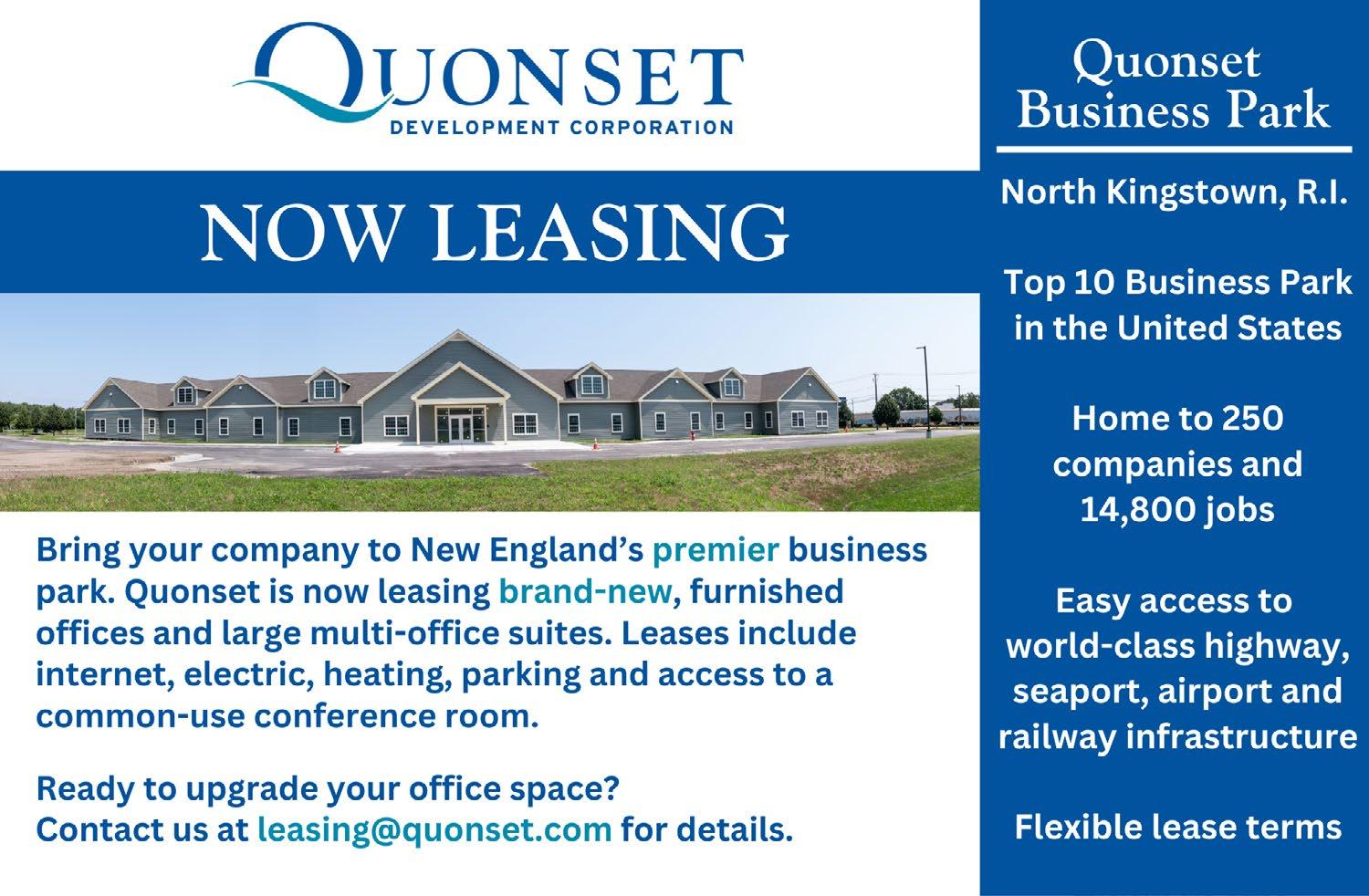
Company expects to begin building four more domestic manufacturing sites this year and add 13,000 high-wage manufacturing and construction jobs in America
The company’s plans represent the largest pharmaceutical manufacturing investment in U.S. history
INDIANAPOLIS, IN — Eli Lilly and Company (NYSE: LLY) announced at a press conference in Washington, D.C., plans to bolster its domestic medicine production across therapeutic areas by building four new pharmaceutical manufacturing sites in the United States. This brings the company’s total U.S. capital expansion commitments to more than $50 billion since 2020.
Three of the future U.S. sites announced today will focus on manufacturing active pharmaceutical ingredients (API), reshoring critical capabilities of small molecule chemical synthesis and further strengthening Lilly’s supply chain. The fourth location will extend the company’s global parenteral manufacturing network for future injectable therapies.
“Lilly’s optimism about the potential of our pipeline across therapeutic areas – cardiometabolic health, oncology, immunology and neuroscience – drives our unprecedented commitment to our domestic manufacturing build-out. Our confidence positions us to help reinvigorate domestic manufacturing, which will benefit hard-working American families and increase exports of medicines made in the U.S.A.,” said David A. Ricks, Lilly chair and CEO. “This bold move reflects our commitment to stay ahead of anticipated demand for safe, high-quality, FDA-approved medicines of the future.”
At these four new sites, Lilly expects to create more than 3,000 jobs for highly skilled workers, including engineers, scientists, operations personnel and lab technicians. Additionally, the company anticipates that it could create nearly 10,000 construction jobs during the development of the sites.
“To deliver on our big bets on next-generation modalities like small
NEW GALILEE, PA The Shapiro Administration and the Department of Community and Economic Development held a groundbreaking for the new Mitsubishi Electric Power Products Inc. (MEPPI) facility in the Pittsburgh region. MEPPI’s $86 million expansion will create at least 200 new jobs and retain 806 employees while expanding Pennsylvania’s critical energy manufacturing sector.
Announced by Governor Josh Shapiro in October 2024, the Commonwealth invested over $6.7 million to support the company’s growth in southwestern Pennsylvania. The new advanced switchgear facility and expanded power electronics facilities and testing lab will allow MEPPI to transition from the production of gas-insulated circuit breakers to vacuum breakers. The switchgear and power electronics solutions that MEPPI provides are essential for meeting the growing demand for electricity.
“We are working to make Pennsylvania the best state in the nation for businesses to grow and thrive,” said Governor Shapiro. “We’re getting stuff done here in the Commonwealth and will continue making bold, strategic investments to boost our economy and create good jobs for Pennsylvanians. MEPPI clearly recognizes that we’re open
molecules, biologics and nucleic acid therapies, Lilly is investing in the stateof-the-art manufacturing infrastructure needed to deliver tomorrow’s safe and reliable medicines,” said Edgardo Hernandez, executive vice president and president of Lilly Manufacturing Operations. “We are not just building facilities. We are creating a future where American innovation leads the world in pharmaceutical manufacturing, requiring a highly skilled workforce prepared to shape the future of health care. This is a significant step for our company, our communities and the patients we serve.”
Expected additional economic benefits of these new sites to the selected communities include increased local spending, tax revenue, economic diversification, improved infrastructure, population growth, and training and development opportunities.
Ricks added, “The Tax Cuts and Jobs Act legislation passed in 2017 during President Trump’s first term in office has been foundational to Lilly’s domestic manufacturing investments, and it is essential that these policies are extended this year. We believe that our investments in America and upskilling our nation’s workforce will spark a significant ripple effect. For every job we create, many more will be generated, positively impacting the communities that host our innovative new sites.”
The company’s previous total domestic capital expansion commitments from 2020 to 2024 totaled $23 billion and represented in today’s $50 billion announcement, included:
• New sites in Research Triangle Park and Concord, North Carolina
• New sites at the LEAP Innovation District in Lebanon, Indiana
• Expansions and updates to several different manufacturing facilities in Indianapolis
• Development of the new Lilly Medicine Foundry in Lebanon, Indiana
• Acquisition and expansion of Lilly’s manufacturing site in Kenosha County, Wisconsin
for business ― choosing the Commonwealth over Ohio for this new, state-of-the-art facility so that we can continue to lead on energy and manufacturing.”
MEPPI received a funding proposal from DCED for a $4 million Redevelopment Assistance Capital Program (RACP) grant and a $2.75 million Pennsylvania First grant.
“We’re not just breaking ground on a new facility; we are advancing Mitsubishi Electric’s investment in North America by engineering, and delivering, the infrastructure of the future,” said Tricia Breeger, President and CEO, MEPPI. “With this investment, MEPPI will be positioned to better serve our customers, provide new opportunities for employment, and contribute to our local community. The Advanced Switchgear Facility will be a place where ideas flourish, talent thrives, and innovation takes shape.
“This groundbreaking signifies the importance of supporting the growth of our existing companies in this region,” said Stefani Pashman, CEO, Allegheny Conference on Community Development. “We appreciate that companies have a choice in their location decisions, and we’re honored the Pittsburgh region has earned MEPPI’s trust and confidence. The products to be made here, combined with the power electronics testing lab, are integral to our region’s energy strategy in solving grid reliability challenges, expanding energy generation and advancing industrial decarbonization.”
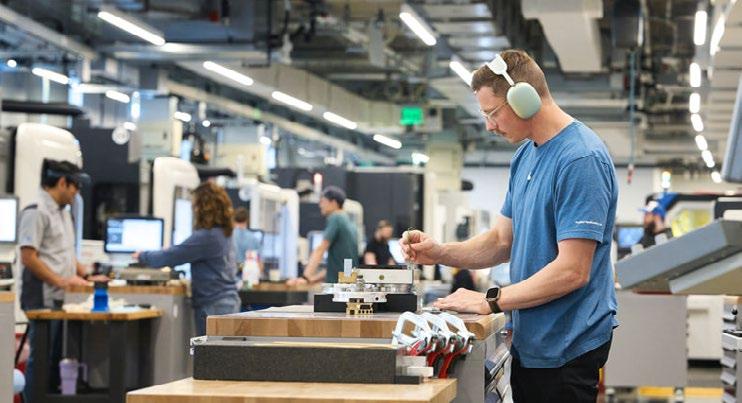
CUPERTINO, CA — Apple announced its largest-ever spend commitment, with plans to spend and invest more than $500 billion in the U.S. over the next four years. This new pledge builds on Apple’s long history of investing in American innovation and advanced high-skilled manufacturing, and will support a wide range of initiatives that focus on artificial intelligence, silicon engineering, and skills development for students and workers across the country.
“We are bullish on the future of American innovation, and we’re proud to build on our long-standing U.S. investments with this $500 billion commitment to our country’s future,” said Tim Cook, Apple’s CEO. “From doubling our Advanced Manufacturing Fund, to building advanced technology in Texas, we’re thrilled to expand our support for American manufacturing. And we’ll keep working with people and companies across this country to help write an extraordinary new chapter in the history of American innovation.”
As part of this package of U.S. investments, Apple and partners will open a new advanced manufacturing facility in Houston to produce servers that support Apple Intelligence, the personal intelligence system that helps users write, express themselves, and get things done. Apple will also double its U.S. Advanced Manufacturing Fund, create an academy in Michigan to train the next generation of U.S. manufacturers, and grow its research and development investments in the U.S. to support cutting-edge fields like silicon engineering.
The $500 billion commitment includes Apple’s work with thousands of suppliers across all 50 states, direct employment, Apple Intelligence infrastructure and data centers, corporate facilities, and Apple TV+ productions in 20 states. Apple remains one of the largest U.S. taxpayers, having paid more than $75 billion in U.S. taxes over the past five years, including $19 billion in 2024 alone.
Today, Apple supports more than 2.9 million jobs across the country through direct employment, work with U.S.-based suppliers and manufacturers, and developer jobs in the thriving iOS app economy.
As part of its new U.S. investments, Apple will work with manufacturing partners to begin production of servers in Houston later this year. A 250,000-square-foot server manufacturing facility, slated to open in 2026, will create thousands of jobs.
Previously manufactured outside the U.S., the servers that will soon be assembled in Houston play a key role in powering Apple Intelligence, and are the foundation of Private Cloud Compute, which
combines powerful AI processing with the most advanced security architecture ever deployed at scale for AI cloud computing. The servers bring together years of R&D by Apple engineers, and deliver the industry-leading security and performance of Apple silicon to the data center.
Teams at Apple designed the servers to be incredibly energy efficient, reducing the energy demands of Apple data centers — which already run on 100 percent renewable energy. As Apple brings Apple Intelligence to customers across the U.S., it also plans to continue expanding data center capacity in North Carolina, Iowa, Oregon, Arizona, and Nevada.
As part of this new investment, Apple is doubling its U.S. Advanced Manufacturing Fund, which was created in 2017 to support world-class innovation and high-skilled manufacturing jobs across America. The growing commitment will increase the fund from $5 billion to $10 billion, focused on promoting advanced manufacturing and skills development throughout the country.
The fund’s expansion includes a multibillion-dollar commitment from Apple to produce advanced silicon in TSMC’s Fab 21 facility in Arizona. Apple is the largest customer at this state-of-the-art facility, which employs more than 2,000 workers to manufacture the chips in the United States. Mass production of Apple chips began last month.
Silicon used by Apple is designed to bring Apple users incredible features, performance, and power efficiency across their devices. Apple’s suppliers already manufacture silicon in 24 factories across 12 states, including Arizona, Colorado, Oregon, and Utah. The company’s investments in the sector help create thousands of high-paying jobs across the country at U.S. companies like Broadcom, Texas Instruments, Skyworks, and Qorvo.
To date, Apple’s U.S. Advanced Manufacturing Fund has supported projects in 13 states — including Kentucky, Pennsylvania, Texas, and Indiana — that have helped build local businesses, train workers, and create a wide range of innovative manufacturing processes and materials for Apple products.
Apple continues to expand its R&D across the U.S. In the past five years, Apple has nearly doubled its U.S.-based advanced R&D spend, and it will continue to accelerate its growth.
Recently, Apple announced the newest addition to its iPhone lineup, iPhone 16e. iPhone 16e delivers fast, smooth performance and breakthrough battery life, thanks to the industry-leading efficiency of the A18 chip and the new Apple C1 — the first cellular modem designed by Apple, and the most power-efficient modem ever on an iPhone. Apple C1 adds a new chapter to the story of Apple silicon and is the result of years of R&D investment, bringing together the work of thousands of engineers. Apple C1 is the start of a long-term strategy that will allow Apple to innovate and optimize the modem system for additional Apple products.
In the next four years, Apple plans to hire around 20,000 people, of which the vast majority will be focused on R&D, silicon engineering, software development, and AI and machine learning. The expanded commitment includes significant investment in Apple’s R&D hubs across the country. This includes growing teams across the U.S. focused on areas including custom silicon, hardware engineering, software development, artificial intelligence, and machine learning.

58 INC.
Amy Sturdivant


Tuscaloosa County Economic Development Authority
Justice Smyth
Executive Director P.O. Box 2667
1126 County Services Drive
Pelham, AL 35124
205-620-6658
asturdivant@58inc.org www.58inc.org
Cullman Economic Development Agency
Dale Greer
P.O. Box 1009
Cullman, AL 35056 256-739-1891
daleg@cullmaneda.org www.cullmaneda.org
Gadsden-Etowah Industrial Development Authority
David Hooks
Executive Director
1 Commerce Square Gadsden, AL 35901 256-543-9423
davidhooks@gadsdenida.org www.gadsdenida.org

Elmore County Economic Development
Cary Cox P.O. Box 117 Wetumka , AL 36092 334-514-5843
cary.cox@elmoreeda.com www.elmoreeda.com
Northwest Alabama EDA
Tom Wisemiller
4020 U.S. Highway 43
Guin, AL 35563 205-468-3213
twisemiller@northwestalabameda.org www.northwestalabamaeda.org
Tuscaloosa, AL 35403 205-349-1414 info@tcoeda.com www.tcoeda.com


Arizona Regional Economic Develoment
Mignonne Hollis
Executive Director
750 E. Bartow Drive Suite 16
Sierra Vista, AZ 85635
520-458-6948
hollism@aredf.org www.aredf.org
City of Flagstaff Economic Development
Jeff McCormick
Economic Development Manager
City of Flagstaff 211 W. Aspen Avenue Flagstaff, AZ 86001
Office 928-213-2966
jmccormick@flagstaffaz.gov www.flagstaffaz.gov

Mesa Gateway Airport Authority
Ryan Smith
Director Communications and Government Relations 5835 South Sossaman Road Mesa, Arizona 85212-0919 Office: 480-988-7617
Cell: 480-550-1326 rsmith@gatewayairport.com www.gatewayairport.com
Pinal Alliance for Economic Growth
Patti King
Executive Mgr. 17235 N. 75th Avenue Suite D-145
Glendale, AZ 85308
520-836-8686
pking@pinalalliance.org www.pinalalliance.org
Salt River Project (SRP)
Karla Moran P.O. Box 52025 Phoenix, AZ 85072-2025
602-236-2396
Karla.moran@srpnet.com www.powertogrowphx.com
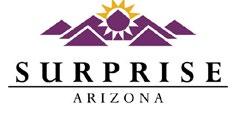
City of Surprise
Mike Hoover
16000 N Civic Center Plaza Surprise, AZ 85374 623-222-3328
Mike.hoover@surpriseaz.gov www.surpriseaz.gov


Ouachita Partnership for Economic Development
James Lee Sillman
Executive Director 625 Adams Aveune Camden, AR 71701 870-836-2210 870-836-8899 (f) caidcark@yahoo.com www.teamcamden.com
Clarksville Economic Development
Steve Houserman 205 Walnut Street, Clarksville, AR 72830 479-754-6486 shouserman@clarksvillear.gov www.clarksvillear.gov

Mississippi County Economic Development
Clif Chitwood 4701 Memorial Drive Blytheville, AR 72315
870-532-6084
clif@cottontosteel.com www.cottontosteel.com


Greater Irvine Chamber
Laura Perdew
36 Executive Park Suite 100 Irvine, CA 92614 949-502-4122
lperdew@irvinechamber.com www.irvinechamber.com
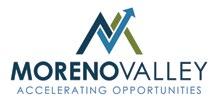
City of Moreno Valley
Economic Development
Mike Lee
Economic Development Director 14177 Frederick Street Moreno Valley, CA 92553 951-413-3460 mike@moval.org www.morenovalleybusiness.com

City of Ontario
Economic Development
Jennifer McLain Hiramoto Economic Development Director 303 East B Street Ontario, CA 91764 909-395-2295
JHiramoto@ontarioca.gov www.ontariothinksbusiness.com

Port of Long Beach
Stephanie Montuya-Morisky 415 W. Ocean Boulevard Long Beach, CA 90802 562-283-7700
stephanie.montuya-morisky@polb.com www.polb.com
COLORADO


City of Canon City
Rick Harrmann
128 Main Street Canon City, CO 81212
719-276-5279 rlharrmann@canoncity.org www.canoncity.org

City of Fountain Economic Development Commission
Kimberly A. Bailey
Economic Development/ Urban Renewal Director
116 S. Main Street Fountain, CO 80817
719-322-2056 kbailey@fountaincolorado.org www.fountaincolorado.org
Grand Junction Economic Partnership
Curtis Englehart, Executive Director 122 N. 6th Street Grand Junction, CO 81501 970--245-4332 curtis@gjep.org www.gjep.org


Town of Berlin
Chris Edge, Director 240 Kensington Road Berlin, CT 06037
860-828-7005
cedge@town.berlin.ct.us www.town.berlin.ct.us


Kent Economic Partnership
Linda Parkowski, Executive Director 555 Bay Road Dover, DE 19901
302-678-3057 info@ccede.com www.choosecentraldelaware.com

Wilmington Economic Development
Sean J. Park
800 N. French St., 3rd Floor Wilmington, DE 19801
302-576-2128
sjpark@wilmingtonde.gov www.wilmingtonde.gov

Enterprise Florida, Inc.

City of Titusville
Nicholas Gow
555 South Washington Avenue
Titusville, FL 32796-3584
321-567-3774
economicdevelopment@titusville.com www.YEStitusvilleFL.com

Greater St. Petersburg Area Economic Development Corporation
J.P. DuBuque
President and CEO
100 2nd Ave N Ste 130 St. Petersburg, FL 33701
727-388-2906
jpdubuque@stpeteedc.com
StPeteEDC.com/BurgBiz

Haines City Economic Development Council, Inc.
Cyndi Jantomaso, MEDP
President/CEO
Post Office Box 3845
Haines City, FL 33845-3845
863-422-2525
cyndi@hainescityedc.com www.hainescityedc.com

Hernando County Office of Economic Development
Valerie M. Pianta, MEDP, Economic Development Director 15800 Flight Path Drive
Brooksville, FL 34604
352--540-6400
vpianta@hernandocounty.us www.hernandobusiness.com


800 North Magnolia Avenue, Suite 1100 Orlando, FL 32803
407-956-5600 www.enterpriseflorida.com
Holmes County Development Commission
Joe Rone
Executive Director 106 E Byrd Avenue Bonifay, FL 32425
850-547-6154
jrone@holmesedc.com www.holmesedc.com

Indian River Chamber of Commerce
Helene Caseltine
Economic Development Director 1216 21st Street Vero Beach, FL 32960
772-567-3491
helenec@indianrivered.com www.indianrivered.com
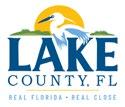
Lake County, Economic Development
Kathleen Dial, Director 315 W. Main Street Tavares, FL 32778
352-742-3925
Kathleen.dial@lakecountyfl.gov www.lakecountyfl.gov
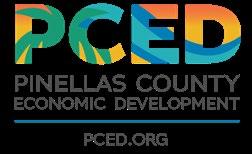
Pinellas County Economic Development
Dr. Cynthia Johnson, EDFP, Director 13805 58th Street North, Suite 1-200 Clearwater, FL 33760
727-464-7332
cyjohnson@pinellas.gov www.pced.org

PortMiami Suzy Trutie 1015 North American Way 2nd Floor Miami, FL 33132
305-347-4962
Suzy.trutie@miamidade.gov www.miamidade.gov
Orlando Economic Partnership
Destin Wells
Senior Vice President, Economic Development
200 S. Orange Avenue, Ste. 200 Orlando, FL 32801
407-902-2420
Destin.Wells@orlando.org InvestOrlando.org

Osceola County
David Rodriguez, Economic Development Manager 1 Courthouse Square, Suite 4400 Kissimmee, FL 34741 407-742-0620
407-742-4202 (f) david.rodriguez@osceola.org www.chooseosceola.com www.osceola.org

Pasco Economic Development Council
Bill Cronin, President & CEO 16506 Pointe Village Drive, Suite 101 Lutz, FL 33558
813-926-0827
813-926-0829 (f) bcronin@pascoedc.com pascoedc.com
Santa Rosa County EDO
Shannon Ogletree, , Executive Director 6491 Caroline Street, Suite 4 Milton, FL 32570-4592 850-623-0174
Shannon@sant arosa.fl.gov www.santarosaedo.com

City of St. Cloud
Antranette Forbes, Economic Development Direcrector 1300 9th Street
St. Cloud, FL 34769 (407)957-7234
antranette.forbes@stcloud.org www.stcloud.org


City of College Park
3667 Main Street College Park, GA 30337
404-305-2052
404-305-2057 (f) www.collegeparkga.com/

City of East Point
Maceo Rogers CEcD
2757 East Point Street
East Point, GA 30344
404-270-7057
jmrogers@eastpointcity.org www.eastpointcity.org

Forward Forsyth
Alex Warner
P.O. Box 1799
Cumming GA 30028
770-887-6461
770-842-1170
awarner@forwardforsyth.org www.forwardforsyth.org

Liberty County Development Authority
Brynn Grant, CEO 425 W. Oglethorpe Highway Hinesville, GA 31313
912-977-4147
brynn.grant@comegrow.global www.comegrow.global

Putnam Development Authority
Matt Poyner
Econmical Devleopment Director 117 Putnam Drive, Eaton, GA 31024
706-816-8099
mpoyner@putnamforward.dev www.putnamforward.dev
Valdosta-Lowndes County Development Authority
Andrea Schruijer, Executive Director P.O. Box 5185
Valdosta, GA 31603-1963
229-259-9972
aschruijer@buildlowndes.com www.buildlowndes.com


Champaign County Economic Development Corporation
Carly McCrory-McKay
Executive Director
1817 S. Neil Street, Suite 100 Champaign, IL 61820
217-359-6261
carly@champaigncountyedc.org www.champaigncountyedc.org

City of Litchfield Ecnomic Development
Breann Vazquez
120 E. Ryder Street Litchfield, IL 62056
217-324-8151
cityadm@cityoflitchfieldil.com www.cityoflitchfieldil.com
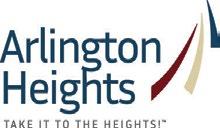
Village of Arlington Heights Business & Economic Development
Michael Mertes, Business Development Manager 33 S. Arlington Heights Arlington Heights, IL 60005 847-368-5220 mmertes@vah.com www.vah.com/business

City of Marshall
Nora Swalls
Economic Development Director
201 S. Michigan Ave Marshall, IL 62441
217-826-2034
nswalls@marshall-il.com www.marshall-il.com

City of Vandalia
Latisha Paslay
431 W. Gallatin St. Vandalia, IL 62471 618-283-1152 618-335-9510 (Mobile) vandaliaed@vandaliaillinois.com www.vandaliaillinois.com

Intersect Illinois
Christy George,CEO 230 W. Monroe St. Chicago, IL 60606 312-667-6013 christy.george@intersectillinois.org www.intersectillinois.org

Southern Illinois Now
Deborah Barnett
Executive Director 1239 East Main Carbondale, IL 62902
618-353-0100 director@southernillinoisnow.org www.southernillinoisnow.org
Adams County EDC
Colton Bickel
313 W. Jefferson Street, Suite 237 Decatur, IN 46733
260-724-2588
cbickel@adamscountyedc.com www.adamscountyedc.com
Carroll County EDC
Jake Adams, Exec Director P.O. Box 83 Delphi, IN 46923 765-564-2060 jadams@carrollcountyedc.com www.carrollcountyedc.com

Miami County Economic Development Auth.
Jim Tidd 1525 W. Hoosier Boulevard Peru, IN 46970 765-689-0159 jtidd@miamicountyeda.com www.miamicountyeda.com


Dodge City/Ford County Development Corporation
Joann Knight, Executive Director 101 E. Wyatt Earp Blvd. Dodge City, KS 67801 620-227-9501 620-227-2957 (f) jknight@dodgedev.org www.dodgedev.org
Go Topeka
Molly Howey, CEcD
President
719 S Kansas Ave. Suite 100 Topeka, KS 66603 785.231.4707
Molly.Howey@topekapartnership.com www.gotopeka.com

Russell County Eco Devo & CVB
Mike Parsons, Director 331 E. Witchita, Russell, KS 67665
785-483-4000 rced2@russellks.net www.russellcountyks.org

Salina Economic Development Organization
D. Mitch Robinson, CEcD 120 West Ash Street Salina, KS 67401 785-404-3131 mrobinson@salinaedo.org www.salinaedo.org

Ann Smith-Tate, President CEO 15100 W. 67th Street Suite 202 Shawnee, KS 66217-9344 913-631-6545
asmithtate@shawneekschamber.com www.shawnee-edc.com

Wyandotte Economic Development Council
Greg Kindle
President
727 Minnesota Avenue
Kansas City, KS 66101 913-371-3198 gkindle@wyedc.org www.wyedc.org

City of Pikeville

Jill Fraley Dotson, Executive Economic Development Director 773 Hambley Boulevard Pikeville, KY 41501
606-437-5128 info@whypikeville.com www.whypikeville.com
Be NKY
Kimberly Rossetti
VP of Economic Development
300 Buttermilk Pike, Suite 332 Ft. Mitchell, KY 41017
888-874-3365
krossetti@Be-NKY.com www.Be-NKY.com

South Western Kentucky EDC
Carter Hendricks, Executive Director 2800 Fort Campbell Blvd. Hopkinsville, KY 42240
270-885-1499
chendricks@southwesternky.com www.southwesternky.com
Louisiana Economic Development
Anya G. Hudnall

1201 N. Third Street, Suite 7-210 Baton Rouge, LA 70802
225-342-5396
Anya.hudnal@la.gov www.la.gov

SWLA Economic Development ALLIANCE
Scott Walker 4310 Ryan Street Lake Charles LA 70605
337-433-3632
swalker@allianceswla.org www.allianceswla.org

St. Mary Parish of Economic Development
Evan Boudreaux, Director
500 Main Street, 5th Floor Courthouse Franklin, LA 70538
337-828-4100
ecodev@stmaryparishla.gov www.stmaryparishdevelopmant.com

Bangor Community & Economic Development
Anne Krieg 262 Harlow Street
Bangor, ME 04401
207-992-4280
anne.krieg@bangormaine.gov www.bangormaine.gov

Town of Richmond Community, Economic, & Business Development
Darryl Sterling Director 26 Gardiner Street Richmond, ME 04357-0159
207-737-4305 x 331 207-737-4306 (f) director@richmondmaine.com www.richmondmaine.com


Calvert County Economic Development
Julie Oberg, Director 205 Main Street Prince Frederick, MD 20678 410-535-4583
julie.oberg@calvertcountymd.gov www.choosecalvert.com

Carroll County Economic Development
Paige Sunderland Director
225 N. Center Street, Ste. 101 Westminster, MD 21157 410-386-2070
psunderland@carrollbiz.org www.carrollbiz.org

Cecil County Economic Development
Sandra Edwards Director
200 Chesapeake Blvd., Ste 2700 Elkton, MD 21921 410-996-8465
sedwards@cecilcountymd.gov www.cecilbusiness.org

Maryland Port Administration
Richard Scher
401 E. Pratt Street Suite 200 Baltimore, MD 21202
rscher@marylandports.com www.marylandports.com

Dorchester County Economic Development
Susan Banks, Director 104 Tech Park Drive Cambridge, MD 21613 410-228-0155
sbanks@choosedorchester.org www.choosedorchester.org

Kent County Department of Economic & Tourism Development
Jamie L. Williams, CEcD, Director 400 High Street, 3rd Floor Chestertown MD 21620 410-810-2168
jlwilliams@kentgov.org www.kentcounty.com/business

Montgomery County Economic Development
Laurie Babb 1801 Rockville Pike, Ste. 320 Rockville, MD 20852 240-641-6704 laurie@thinkmoco.com www.thinkmoco.com

Talbot County Economic Development
Cassandra M. Vanhooser, Director 11 S. Harrison Street Easton, MD 21601 410-770-8000 Cvanhooser@talbgov.org www.talbgov.org

Economic Development Alliance (EDA) of St. Clair County
Dan Casey, CEO 100 McMorran Boulevard 4th Floor, Suite B Port Huron, Michigan 48060 810-982.9511 www.edascc.com stclairhotjobs.com

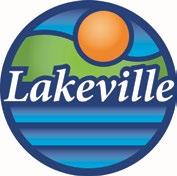
City of Lakeville Community & Economic Development
Tina Goodroad, Director 20195 Holyoke Avenue Lakeville, MN 55044 952-985-4421
tgoodroad@lakevillemn.gov www.lakevillemn.gov

Greenwood Leflore Carroll EDF
Thomas Gregory P.O. Box 26 Greenwood, MS 38930 662-453-5321 Thomas@greenwoodedf.com www.greenwoodedf.com
Hinds County EDA P.O. Box 248 Jackson, MS 39205-0248 601-353-6056 www.selecthinds.com

Sikeston Regional Chamber & Economic Development Corp.

Michigan Economic Development Corporation 300 N. Washington Sq. Lansing, Michigan 48913 888-522-0103 www.michiganbusiness.org
Marcie Lawson
128 N. New Madrid Street Sikeston, MO 63801 573-471-2498
marcie.lawson@sikeston.net www.sikeston.net


Phelps County Development Corp.
Phelps County Development Corp.
Ron Tillery Executive Director
502 East Avenue, Suite 201 Holdrege, NE 68949 308-995-4148 pcdc@phelpscountyne.com www.phelpscountyne.com


Choose New Jersey
Bill Noonan, Chief Business Development Officer 11-43 Raymond Plaza W, Suite 1420 Newark, NJ 07102 609-297-2200 wnoonan@choosenj.com www.choosenj.com

City of Vineland Economic Development
Sandy Forosisky
640 E. Wood Street, Fourth Floor Vineland, NJ 08362
856-794-4100 sforosisky@vinelandcity.org www.business.vinelandcity.org

Gloucester County Department of Economic Development
Tom Bianco, Director 1480 Tanyard Rd., Sewell, NJ 08080 856-384-6930 tbianco@co.gloucester.nj.us www.gloucestercountynj.gov

New Jersey EDA
Pat J. Rose 36 West State Street Trenton, NJ 08625 609-858-6705 prose@njeda.com www.njeda.com

Albuquerque Regional Economic Alliance
Danielle Casey, CEcD
President
201 Third Street NW, #1900 Albuquerque, NM 87102 505-705-3785
dcasey@abq.org www.abq.org

EDC of Lea County
Jennifer Grassham, CEO
200 E. Broadway Street Hobbs, NM 88240 573-397-2039 jennifer@edclc.org www.edclc.org
Roswell-Chaves County EDC
Michael Espiritu 220 North Main Roswell, NM 88201 575-622-1975
mespiritu@chavescounty.net www.chavescounty.net


Allegany County Industrial Development Agency
Craig Clark, Executive Director CrossRoads Center 6087 State Route 19N, Suite 100 Belmont, NY 14813 585-268-7472 800-893-9484 clarkcr@alfredstate.edu www.acida.org

Saratoga EDC
Tori J.E. Riley, VP 517 Broadway #203 Saratoga Springs, NY 12866 518-587-0945
toririley@saratogaedc.com www.saratogaedc.com

County of Chautauqua IDA
Jason Sample 201 W. 3rd Street, Suite 115 Jamestown, NY 14701
716-661-8302
samplej@chqgov.com www.choosechq.com


Bismarck Mandan Chamber EDC
Nathan Schneider, CEcD-Vice President 1640 Burnt Boat Dr., Bismark, ND 58503 701-223-5660
nschneider@bmcedc.com www.bismarckmandanedc.com

Grand Forks Region Economic Development Corporation
Keith Lund, Pres/CEO 120 N 4th St., Grand Forks, ND 58203 701-746-2722
keithl@grandforks.org www.grandforks.org


Ardmore Development Authority
Andrea Anderson 410 West Main Ardmore, OK 73402 580-223-6162
aanderson@ardmore.org www.ardmoredevelopment.com

Bartlesville Development Authority
Jared Patton, Vice President 201 SW Keeler, Bartlesville, OK 74003 918-337-8086 918-337-0216 (f) jpatton@bdaok.org www.bdaok.org
Broken Arrow Economic Development Corp.
Amber Miller 210 North Main, Suite C Broken Arrow, OK 74012 918-893-2103
amber.miller@bachamber.com www.brokenarrowedc.com

Cleveland County Economic Development Coalition
Lawrence McKinney, CEcD, CCE, IOM President and CEO 425 West Main Street Norman, Oklahoma 73069
P: 405-573-1900 C: 405-881-0456
Lawrence@SelectClevelandCounty.com www.SelectClevelandCounty.com

Erie County Redevelopment Authority
Tina M. Mengine 1314 Griswold Plaza Erie, PA 16501 814-480-0337 x 101 Tmengine@ecrda.net www.ecrda.net
Horsham Township Economic Development
Larry Burns 1025 Horsham Road Horsham, PA 19044 215-643-3131 x 234 lburns@horsham.org www.horsham.org
Penn’s Northeast
John L. Augustine III 1151 Oak Street Pittston, PA 18640 570-883-0504 jaugustine@pennsnortheast.com www.pennsnortheast.com


Quonset Development Corporation
Steven J. King, Managing Director 95 Cripe Street North Kingstown, RI 2852 401-295-0044 sking@quonset.com www.quonset.com

Charleston Regional Development Alliance
Megan Fink 4401 Belle Oaks Drive, Suite 420 North Charleston, SC 29405 843-760-3351 mfink@crda.org www.crda.org
Lexington County Economic Development
Garrett Dragano, Director 212 South Lake Drive Lexington, SC 29072 803-785-6818
gdragano@lexingtoncounty.sc.gov www.LexingtonCountyUSA.SC.gov
South Carolina I-77 Alliance
Christopher Finn
3200 Commerce Drive, Suite D Richburg, SC 29729
803-789-3467
chris.finn@i77alliance.com www.i77alliance.com

SouthernCarolina Regional Alliance
Kay Maxwell 1750 Jackson Street, Suite 100 Barnwell, SC 29812 803-541-0023
kmaxwell@southerncarolina.org www.southerncarolina.org


Blount Partnership
Bryan Daniels CEcD, CCE, IOM President and CEO
201 S. Washington Street St. Maryville, TN 37804
865-983-2247
865-984-1386
bdaniels@blountpartnership.com www.blountchamber.com

Bristol Tennessee Essential Services
April Eads
Business Development Manager 2470 Volunteer Parkway Bristol, TN 37620
423-793-5532
423-793-5545 (f) aeads@btes.net www.btes.net/index.php/economic-development Chattanooga Chamber of Commerce
Jeremy Henderson
811 Broad Street, #100 Chattanooga, TN 37402 423-763-4347
jhenderson@chattanoogachamber.com www.chattanoogachamber.com

City of Lebanon
Sarah Haston
Economic Development Director
200 North Castle Heights Ave. Lebanon, TN 37087 615-443-2839 EXT. 2120
Sarah.Haston@lebanontn.org www.lebanontn.org


City Development Corp of El Campo
Carolyn Gibson, Executive Director 707 Fahrenthold, P.O. Box 706 El Campo, TX 77437
979-543-6727 979-320-7727 cell cgibson@elcampoeco.org www.elcampoeco.org

Big Spring Economic Development Corporation
Mark Willis
215 W. 3rd Street
Big Spring, TX 79720 432-264-6032
markwillis@bigspringtx.com www.bigspringtx.com

Bowie Economic Development Corporation
Janis Crawley
101 E. Pecan, Bowie, TX 76230
940-872-4193 940-531-8201(c)
BEDC@BowieTexasEDC.com www.BowieTexasEDC.com
Cameron Industrial Foundation
Ginger Watkins, Executive Director 102 E. First Street, Suite A Cameron, TX 76520
254-697-4970
254-482-1119 (c) gwatkins@cameronindustrialfoundation.com www.cameronindustrialfoundation. com

Clyde Economic Development Corp.
Rodger Brown 222 Oak Street Clyde, TX 79510
325-386-4444 rodgerbrown@clyde-tx.gov www.clyde-tx.gov
Conroe Economic Development Council
Laura Lea Palmer, Deputy Director 300 W Davis St, Ste 510 Conroe, TX 77301 USA 936-522-3014 palmer@conroeedc.org www.conroeedc.org

DeSoto Economic Development
Matt Carlson, CEO 211 E. Pleasant Run Road DeSoto, TX 75115 Ph: 972-230-9611 mcarlson@desototexas.gov www.dedc.org

Edinburg Economic Development Corp.
Raudel Garza, Executive Director 3111 W Freddy Gonzalez Drive Edinburg, TX 78539 956-388-8914 raudel@edinburgedc.com www.edinburgedc.com

Gainesville Economic Development Corp.
William Myers, Executive Director 311 S. Weaver Street Gainesville, TX 76240 940-665-5241 info@gainesvilletxedc.com www.gainesvilletxedc.com

Hamilton Economic Development Corp.
Kayla Schraub 108 North Bell Street Hamilton, TX 76531 254-386-5954 edc@hamiltontexas.com www.hamiltontexas.com

Harlingen Economic Development Corp.
Orlando Campos, CEO 2424 Boxwood St, Ste 125 Harlingen, TX 78550 956-216-5085
ocampos@harlingenedc.com www.harlingenedc.com
Jacksboro Economic Development Corporation
Brenda Tarpley, Executive Director 302 S. Main Street
Jacksboro, TX 76458 940-567-3151
btarpley@jacksboroedc.com www.jacksboroedc.com

Laredo Economic Development
Gene Lindgren, President & CEO
302 S. Main Street
Laredo, TX 78044 956-722-0563
glindgren@laredoedc.org www.laredoedc.org

Marble Falls EDC
Christian Fletcher 801 Fourth Street
Marble Falls, TX 78654 830-798-7079
cfletcher@marblefallseconomy.com www.marblefallseconomy.com

McKinney Economic Development Corporation
Michael Kowski, President/CEO 7300 SH 121 SB, Ste 200 McKinney, TX 75070
972-547-7687
mkowski@mckinneyedc.com www.uniquemckinney.com

Mineola Economic Development Corp
Mercy Rushing, Executive Director
300 Greenville Highway
Mineola, TX 75773 903-569-6183 903-245-8505
mrushing@mineola.com www.mineola.com

Mount Pleasant EDC
Nathan Tafoya, Executive Director
1604 N. Jefferson Ave.
Mount Pleasant, TX 75455 903-572-6602 nathan@mpedc.org www.mpedc.org

Tomball Economic Development Corp.
Kelly Violette Executive Director 29201 Quinn Road, Suite B Tomball, TX 77377
281-401-4086
kviolette@tomballtxedc.org www.tomballtxedc.org
Odessa Economic Development Corporation
Tom Manskey
700 N. Grant Ave.
Odessa, TX 79761 432-333-7880 tom@odessaecodev.com www.odessatx.com

Palestine Economic Development Corp.
Christophe Trahan, Director 100 Willow Creek Parkway, Suite A Palestine, TX 75801 903-731-8412 edcdirector@palestine-tx.org www.palestinetexas.net

Pflugerville Community Development
Jerry Jones, Executive Director 3801 Helios Way Suite 130 Pflugerville, TX 78660 512-990-3725 director@pfdevelopment.com www.pfdevelopment.com

Plainview Economic Development Corporation
Kristi Aday, Executive Director 1906 West 5th Plainview, TX 79072 806-293-8536 kaday@plainviewtx.org www.plainviewedc.org

TexAmericas Center
Eric Voyles, Executive Vice President Chief Economic Development Officer 107 Chapel Lane
New Boston, TX USA 75570 903-223-9841 (0) 903-306-8923 Cell Eric.Voyles@TexAmericasCenter.com www.TexAmericasCenter.com

Whitesboro Economic Development Corp.
Lynda Anderson, Director P.O. Box 340 or 111 W. Main Whitesboro, TX 76273 930-564-3311
landerson@whitesborotexas.com www.whitesborotexas.com

Eagle Mountain Economic Development
Evan Berrett, Economic Development Director 1650 E. Stagecoach Run Eagle Mountain, UT 84005
801-789-6645 eberrett@emcity.org www.eaglemountaincity.com

Alexandria Economic Development Partnership
Kelly Martin 601 Prince Street Alexandria, VA 22314
703-739-3820
703-739-1384 (f) martin@alexandriaecon.org www.alexandriaecon.org
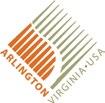
Arlington Economic Development
Ryan Touhill, AED Director 1100 N Glebe Rd Suite 1500 Arlington, VA 22201
703-228-0808
703-228-0805 (f) rtouhill@arlingtonva.us www.arlingtoneconomicdevelopment.com

Bedford County Office of Economic Development
Pam Bailey, Director of Economic Development Bedford County 122 East Main Street, Suite 202 Bedford, Virginia 24523
540-587-5670
pbailey@bedfordcountyva.gov www.bedfordeconomicdevelopment.com

County of Gloucester
Sherry A. Spring Director of Economic Development 6489 Main Street Gloucester, VA 23061 804-693-1414 sspring@gloucesterva.info www.gloucesterva.info


City of Lakewood Economic Development
Becky Newton, Manager 6000 Main Street SW Lakewood, WA 98499 877-421-9126
bnewton@cityoflakewood.us www.buildyourbetterhere.com


Mingo County Redevelopment Authority
Leasha Johnson, Executive Director 1657 East Fourth Avenue Williamson, WV 25661 304-235-0042 304-235--0043 (f) ljohnson@developmingo.com www.developmingo.com


Madison Region Economic Partnership
Kathy Collins, VP Economic Development 8517 Excelsior Drive, Suite 107 Madison, WI 53717 608-571-0407
kcollins@madisonregion.org www.madisonregion.org

New North, Inc
Barb LaMue, President & CEO 2740 W. Mason Street Green Bay, WI 54303 920-676-1960
barb.lamue@thenewnorth.com www.thenewnorth.com
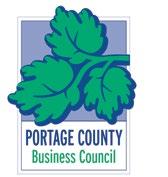
Portage County Business Council, Inc. PCB
Michael Witte, Executive Director 5501 Vern Holmes Drive Stevens Point, WI 54482 715-344-1940 715-344-1940 (f) michaelw@portagecountybiz.com www.portagecountybiz.com


Advance Casper, Wyoming
Justin Farley, CEO 139 W. 2nd St., #1D Casper, WY 82601 307-577-7011
justin@advancecasper.com www.advancecasper.com

Cheyenne LEADS
Betsey Hale, Chief Executive Officer One Depot Square 121 W. 15th St. Suite 304 Cheyenne, WY 82001 307-638-6000
betseyh@cheyenneleads.org cheyenneleads.org

The Laramie Chamber Business Alliance
Josh Boudreau, VP Economic Development 528 South Adams Street Laramie, WY 82070 307-745-7339
jboudreau@laramie.org www.laramie.org


Calgary Economic Development
500 Centre Street S, 32nd Floor
Calgary, Alberta, Canada T2G 1A6
403-221-7831
info@calgaryeconomicdevelopment.com www.calgaryeconomicdevelopment.com
Town of Vegreville
Jamieson Brown
4829-50 Street P.O. Box 640
Vegreville, Alberta T9C 1R7 587-790-0919 jbrown@vegreville.com www.choosevegreville.com
City of Brandon
Gerald Cathcart


Ignite Fredericton
Paula Lehr
40 Crowther Lane, Ste. 100 Fredericton, NB E3C 0J1
506-282-0624
paula.lehr@ignitefredericton.com www.ignitefredericton.com
Imagine Chaleur
Shirley de Silva
702 Principale Street, Ste. 2 Petit-Rocher, NB E8j 1V1 506-542-2688 shirley.desilva@csrchaleurrsc.ca www.csrchaleurrsc.ca
Expansion Dieppe
Louis Godbout
333 Acadia Avenue
Dieppe, NB E1A 1G9
506-877-7850 louis.godbout@dieppe.ca www.expansiondieppe.ca

Elgin County
Director Main Floor, 410 9th Street Brandon, Manitoba, Canada R7A 6A2 204-729-2131
g.cathcart@brandon.ca www.economicdevelomentbrandon.com

Carolyn Krahn, Manager Economic Development And Tourism 450 Sunset Drive St. Thomas, Ontario, Canada N5R 5V1 519-631-1460 ext. 133 ckrahn@elgin.ca www.progressivebynature.com

City of Guelph
Christine Chapman 1 Carden Street
Guelph, Ontario, Canada N1H 3A1 519--822-1260 ext. 2823 Christine.chapman@guelph.ca www.guelph.ca/business
City of Kawartha Lakes Economic Development
Lindsey Schoenmakers 180 Kent Street West
Lindsay, Ontario, Canada K9V 2Y6 705-324-9411
lschoenmakers@kawarthalakes.ca www.kawarthalakes.ca

Middlesex County
Cara A. Finn, BBA, M. Ad.Ed. Director of Economic Development 399 Ridout St. North London, ON N6A 2P1 519-434-7321 cfinn@middlesex.ca www.investinmiddlesex.ca

Invest Mississauga, Economic Development
Christina Kakaflikas, Ec. D. Economic Development Division
Mississauga City Hall
300 City Centre Drive, 3rd Floor Mississauga, ON L5B 3C1 Canada 905-615-3200 x 5014
christina.kakaflikas@mississauga.ca www.investmississauga.ca
Town of Aurora Economic Development
Lisa Hausz
100 John West Way, Box 1000 Aurora, Ontario, Canada L4G 6J1 905-727-1375
lhausz@aurora.ca www.aurora.ca

Vaughan Economic and Cultural Development
Raphael Costa Vaughan City Hall, Level 200 2141 Major Mackenzie Drive Vaughan, Ontario, Canada L6A 1T1 905-832-8526 ext. 8891 raphael.costa@vaughan.ca www.vaughan.ca/Business
